FREE AUSTRALIAN INDIAN PERSPECTIVE




NOT TIRED
FROM CAPTIVITY TO COURAGE Somen Debnath's Global Cycling Journey for Awareness








FREE AUSTRALIAN INDIAN PERSPECTIVE




NOT TIRED
FROM CAPTIVITY TO COURAGE Somen Debnath's Global Cycling Journey for Awareness








CALL: TONEE SETHI
Tel: (03) 9841 6263
Mob: 0412 114 383
Email: info@gdayindia.com.au
Postal Address: PO BOX 1500, Doncaster East, VIC, 3109
Editor in Chief: Tonee Sethi
E: editor@gdayindia.com.au
Advertising: Amandeep Sethi E: info@gdayindia.com.au Contributors:
MELBOURNE, Jul 9: Arts and culture fans in regional Victoria will experience world-class performances, exhibitions and unmissable creative opportunities in their local venues thanks to the Andrews Labor Government’s Touring Victoria program.
Acting Minister for Creative Industries Ben Carroll is encouraging organisations to apply for the latest round of the program, which provides grants of between $10,000 and $250,000 to support tours by Victorian arts and cultural organisations and creatives.
Touring Victoria enables Victorian artists to hit the road and connect with regional audiences, ensuring arts and culture fans in regional, rural and outer-metropolitan Victoria have access to the best productions, performances and exhibitions close to home. Touring activity also provides an economic boost to the towns and regions they visit.

The 2022 Touring Victoria round provided more than $800,000 to enable some of the country’s top arts organisations to present productions, workshops, exhibitions and creative experiences across the state – this activity is rolling out throughout 2023.
With support through the program, The Australian Ballet is visiting five Victorian communities including Mooroopna and Warragul this month and in August. As well as presenting performances, the ballet will offer in-school activities, ballet classes, sessions on production management, and opportunities for work experience.
The Melbourne Symphony Orchestra will visit eight regional centres, including Bendigo and Warrnambool, with programs tailored to each community.
The Koorie Heritage Trust is touring Layers of Blak, an exhibition of contemporary jewellery by First Nations designers, to galleries including Mornington Peninsula Regional Gallery, Mildura Arts Centre and TarraWarra Museum of Art. As well as ensuring audiences across the state have access to the best productions, performances and exhibitions, the Touring Victoria program supports community and education activities including talks and Q&As, school and library programs and professional development opportunities for local artists and creative workers. Applications for the latest round of Touring Victoria close on Thursday 27 July, with activities to commence from 1 December 2023. For details on how to apply and to see the full list of 2022 Touring Victoria recipients visit: creative.vic.gov.au/ touring-victoria
MELBOURNE, Jul 6: More students and researchers across Victoria will spearhead new research into drug discovery and medical treatments, made possible by the Andrews Labor Government.
Minister for Higher Education Gayle Tierney joined researchers at the Olivia Newton John Cancer Research Institute today to officially announce an investment of more than $14.8 million to support critical imaging capabilities across several research sites, through the Victorian Higher Education State Investment Fund.
Researchers will share this cutting-edge equipment and expertise through the Victorian Biomedical Imaging Capability project – ensuring Victoria remains at the forefront of drug discovery and new medical treatment.
The project is delivered in partnership with the National Imaging Facility, a network of imaging research institutes that includes Monash University, University of Melbourne, La Trobe University and Swinburne University of Technology alongside leading research facilities from across Australia.
This investment will also support pivotal clinical
research studies in mental health, Alzheimer’s disease and other neurological diseases – with upgraded human imaging capabilities at the University of Melbourne and Swinburne University of Technology, and radiochemistry facilities at Austin Health and the Peter MacCallum Cancer Centre.
It will also bolster preclinical imaging capabilities at Monash Health and Olivia NewtonJohn Cancer Research Institute – along with the purchase of an ultrasonographic brain lesioning system at the Florey Institute.
Bringing more students and researchers across Victoria to the forefront of medical research, this funding will support clinical research studies into oncology, neurological disorders including mental health, drug discovery and testing and imageguided neurosurgery.
The $350 million Victorian Higher Education State Investment Fund supports universities with financial assistance for capital works, applied research and research infrastructure to create more jobs and grow Victoria’s economy.
MELBOURNE – 10 July 2023: The 14th edition of the Indian Film Festival of Melbourne (IFFM) will be held from 11th to 20th August, showcasing a diverse and captivating lineup of over 120 films in more than 20 languages. This hybrid festival combines in-person screenings, special events, and an online program accessible through the IFFM streaming platform.

The festival will kick off with the world premiere of the highly anticipated Hindi film, Ghoomer, directed by renowned filmmaker R Balki and featuring Shabana Azmi, Abhishek Bachchan, and rising stars Saiyami Kher and Angad Bedi.
Mitu Bhowmick Lange AM, IFFM Festival Director, highlighted the festival's commitment to celebrating diversity, creativity, and ingenuity in storytelling. The program includes thought-provoking documentaries, captivating narratives, and entertaining short films, showcasing the talent and vision of filmmakers from the Indian subcontinent.
Key program streams such as Beyond Bollywood, Hurrah Bollywood, Documentaries, Short Films (Official Selection), Film India World, Films from the Subcontinent, and Made in Melbourne will feature prestigious international prize-winning films, hard-hitting documentaries, and compelling narratives.
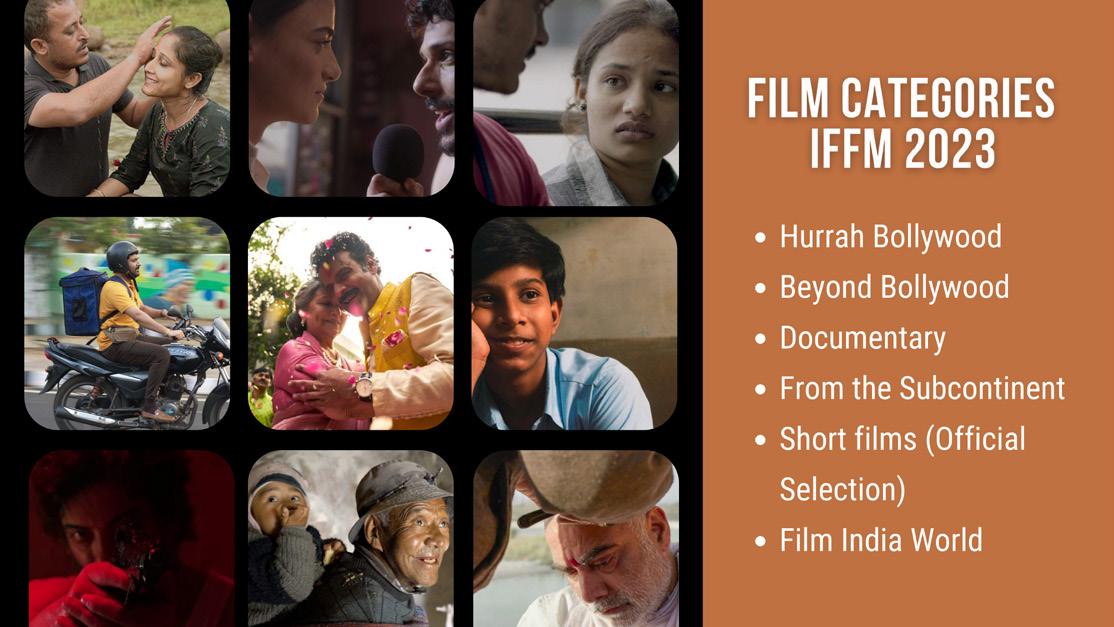

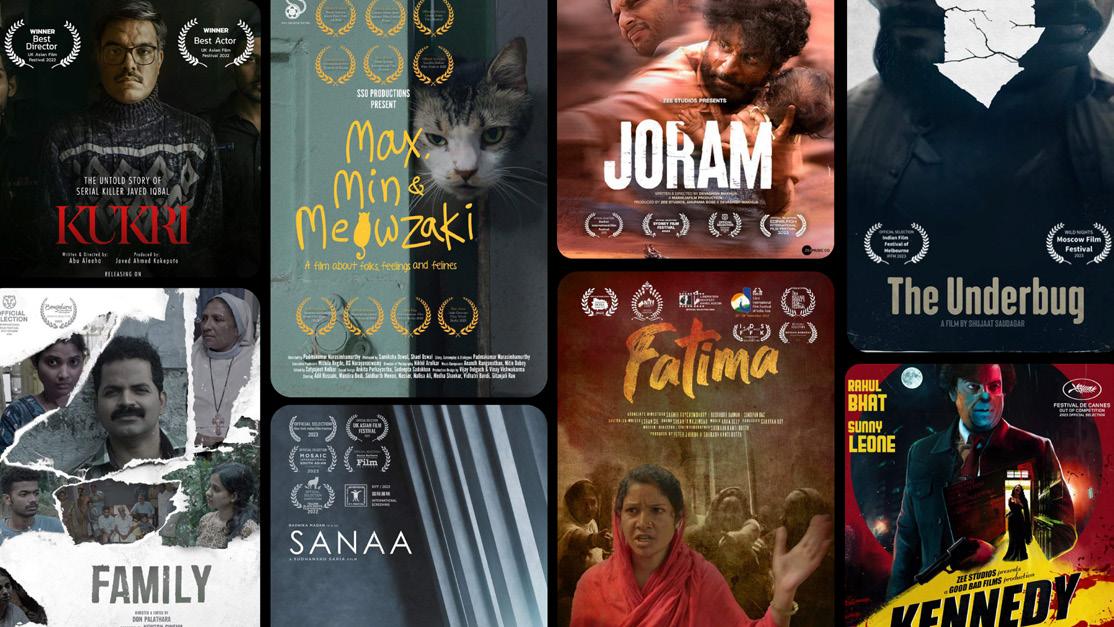
Some of the highlights of the program include Rima Das's award-winning drama ‘Tora's Husband’, Kanu Behl's Australian premiere of ‘Agra’, ‘All India Rank’ Varun Grover's semi-autobiographical debut
feature. Marathi feature film, ‘Aatmapamphlet’ (Autobio-Pamphlet). Prithvi Konanur’s feature film, ‘Hadinelentu’ (Seventeeners). The award-winning documentary ‘While We Watched’, directed by Vinay Shukla chronicles the working days of infamous Indian broadcast journalist Ravish Kumar. Devashish Makhija’s thriller ‘Joram’, starring Manoj Bajpayee will also make its Victorian debut.
The festival is proudly presented by the Victorian Government via VicScreen, which is a principal partner of the festival.
IFFM is proudly presented by the Victorian Government via VicScreen and will take place at various iconic venues across Melbourne, including the National Gallery of Victoria (NGV), Arts Centre Melbourne, and Hoyts venues.

Tickets are now available for the ANZ Plus IFFM Awards Night 2023, a red-carpet event featuring the glamour and excitement of Indian cinema's top talent, held on August 11th at Arts Centre Melbourne.
For more information and the full program details, please visit www.iffm.com.au.
delivering an election commitment to grow our renowned hospitality and live music industry and ensure Melbourne remains the live music capital of the world.
social behaviour. This can include venue management plans, addressing noise limits, the number of security staff and better responsible service of alcohol requirements, depending on the potential risk of the licence application.
The Commission will also continue to take current planning provisions into account that apply to venues applying for variations.
Importantly, the Commission will consider requesting late-night licence applications to have plans to prevent and address genderbased violence, including sexual harassment.
MELBOURNE, Jul 3: The Andrews Labor Government is supporting Melbourne’s night-time economy and helping create new live music venues by lifting the freeze on late-night liquor licences in the inner-city municipalities of Melbourne, Port Phillip, Yarra and Stonnington.

Acting Minister for Casino, Gaming and Liquor Regulation Anthony Carbines today announced the freeze on late-night licences in inner-city councils will end from today,
New guidelines will also be introduced with stronger ways of responding to potential alcoholrelated harm and amenity issues.
Applications will be assessed for risk to ensure measures are in place to minimise alcohol harm and anti-social behaviour and venues will no longer require the same exemptions to be granted to obtain licences to operate after 1am.
The Victorian Liquor Commission may include conditions on new licences to address alcohol-related harm or anti-
The new guidelines were developed following close consultation with Victoria Police, local government, hospitality, tourism, creative industries and harm reduction stakeholders, as well as public submissions on Engage Victoria.
These guidelines build on legislative reforms to the Liquor Control Reform Act 1998 that established a dedicated liquor regulator, while also clearly defining harm.
An initial review of the new settings will be completed next year, with a second more comprehensive review to be completed two years after the guidelines begin.
The investment builds on the $2.5 million already provided under Phase 1 of the program in 2022.
accommodation, multicultural community services for family violence and a service feedback model with victim-survivors of sexual violence.
The design and approach of Phase 2 has been informed and influenced by people with lived experience of family violence. Members of the Victim Survivors’ Advisory Council have been part of the team developing and guiding the selection of research topics.
MELBOURNE, Jul 4: Six new research projects are being funded under the latest round of the Andrews Labor Government’s Family Violence Research Program, helping to develop innovative solutions to respond to family violence.

Minister for Prevention of Family Violence Ros Spence has announced the new projects, which are part of a $1.2 million package to help build an evidence base for best practice family violence interventions, service delivery and innovation leading to better outcomes for victim survivors.
Research topics for Phase 2 address evidence gaps in priority research topics – including children and young people, multicultural communities and embedding lived experience in research.
The six research projects will be conducted by five grant recipients –University of Melbourne, RMIT University, Deakin University, La Trobe University, and Monash University – partnering with 15 sector organisations and peak bodies. Successful project themes include access for children and young people to crisis
Research applicants were also required to demonstrate how they would incorporate lived experience to their proposed project, from design to delivery stages, as assessed by a lived experience panel.
The program supports the delivery of the Labor Government’s Family Violence Research Agenda 2021-24 which ensures research is embedded as part of Victoria’s landmark family violence reform.
Victoria is leading the nation with its work to end family violence, with the Labor Government investing more than $3.86 billion since the Royal Commission into Family Violence – more than every other state and territory combined.
(MEDIA RELEASE)
MELBOURNE, Jul 2: The Andrews Labor Government will extend the Porter Davis support scheme to other clients of collapsed builders who were left significantly out of pocket due to the actions of their builders.
Several hundred additional families may be eligible for one-off support payments after their builder failed to take out mandatory Domestic Building Insurance (DBI) on their behalf, and then went into liquidation.
Eligible Porter Davis Homes customers who paid 3 per cent pre-deposit money for “tender agreements”, but received no DBI cover, will also have access to payments of up to $50,000.

In addition to Porter Davis tender deposit customers, the support scheme will be extended to clients of other builders that have gone into liquidation in the past 12 months where the customers have been left without DBI through no fault of their own.
Some customers of Snowdon Developments and Hallbury Homes have had similar experiences to Porter Davis customers and could be eligible for a payment capped at $50,000. For a person to be eligible under the scheme extension, their builder must have entered liquidation between 1 July 2022 and 30 June 2023.
People who have been affected by the liquidation of a builder in the past 12 months can provide details at vic.gov.au/liquidatedbuilders-survey. Guidance on how to make an application will be provided in due course.
The first payments to Porter Davis Homes customers under the Labor Government’s original customer support payment scheme will land in the coming days.
Following verification of details with the
company’s liquidator, confirmation letters are being progressively issued and payments will be made to customers who paid standard 5 per cent deposits but were left without cover because the company did not take out mandatory DBI on their behalf.
Refunds for these customers will be paid up to the legal maximum deposit of 5 per cent under the Domestic Building Contracts Act 1995. The Government opened the customer support payment scheme in late May.
Domestic builders must by law take
out DBI on behalf of customers when they accept a legal deposit – the Victorian Building Authority (VBA) is investigating the failure of Porter Davis to do so for many customers.
The Government has already announced plans to reform the Domestic Building Contracts Act 1995, strengthen domestic building insurance requirements and introduce a new offence with tougher penalties for builders who request deposits without taking out the required insurance.
(MEDIA RELEASE)
MELBOURNE, Jul 7: One of China’s largest airlines will add 10 more flights each week to Melbourne, bringing more visitors, enabling more exports and creating more jobs, thanks to support from the Andrews Labor Government.
Minister for Industry and Innovation Ben Carroll today announced that China Southern Airlines will operate 17 non-stop flights per week to Melbourne from Guangzhou and potentially Shenzhen by the end of 2024.

Backed by the Labor Government and Melbourne Airport, the extra 10 flights per week will add almost 154,000 seats to Melbourne and contribute more than $308 million to the Victorian economy annually, while creating an estimated 1,700 jobs in the aviation and tourism sectors.
China Southern currently operates a daily flight to Melbourne Airport from Guangzhou,
one of China’s largest cities and a key trading and transport hub. The airline will increase to two daily flights by November and then add three more flights per week from either Guangzhou or nearby Shenzhen by December 2024.
The additional flights will help accelerate the return of visitors from China, which was Victoria’s largest international tourism market in 2019 with more than 675,000 visitors contributing $3.4 billion to the local economy.
There are more than 33,000 international students from China in Victoria, making up 23 per cent of international students in the state.
With more than 6,000 tonnes of air freight capacity annually, these extra flights will enable more exports to China, Victoria’s largest trading partner. In 2022, two-way trade with China was worth almost $40 billion.
China Southern adds to a growing list of
major international airlines the Government has supported to expand flights to Melbourne including Qantas, Cathay Pacific, Qatar Airways, Singapore Airlines, United Airlines, Emirates, Etihad Airways, Bamboo Airways, Scoot, VietJet and LATAM Airlines.
submissions have to be eligible," he teases, hinting at the surprises he might have up his sleeve.
Siyer's musical journey has been nothing short of extraordinary. His debut album, 'Is Dhundh Mein,' released by the esteemed Shankar Mahadevan and produced by three-time Grammy award winner Ricky Kej, catapulted him into the limelight. Collaborating with playback singer Sadhna Sargam on the album, Siyer demonstrated his versatility and talent.
Having shared the stage with luminaries like Shankar Mahadevan, Udit Narayan, Sadhna Sargam, and opening shows for artists like Usha Uthup, Ali Azmat (Junoon), and Rahul Vaidya, Siyer's performances have captivated audiences across the globe.
Based in the vibrant city of Melbourne, Siyer has graced over 500 concerts, performing at iconic venues such as the Melbourne Cricket Ground, The Sydney Cricket Ground, The St Kilda Festival, and Moomba Festival. His unique multicultural background has lent a distinct flavor to his work, leading to features on prominent channels like Channel V, MTV India, and Australia's Channel 7.
The musical world awaits with bated breath as Siyer (a.k.a Shriram Iyer), the Melbourne-based Indian singer and songwriter, embarks on a journey that could lead him to the prestigious Grammy Awards. Recently invited to join The Recording Academy as a Voting Member, Siyer's 23year career in music has earned him the recognition and appreciation of his peers in the industry.
Reflecting on the honour of being inducted into The Recording Academy's Class of 2023, Siyer expresses his delight at receiving acknowledgement from one of the music world's peak bodies. "To be recognised for my body of work and a 23-year career as a musician is very rewarding," he shares with a sense of pride.
Siyer's tryst with the Grammy Awards began last year when his collaboration with Bobby Beebob, 'The Saffron Groove Project,' gained official entry. While the album didn't receive a nomination, it garnered significant attention, and Siyer valued the experience of being part of the formal 'FYC Campaign' process. Notably, Rolling Stone India even
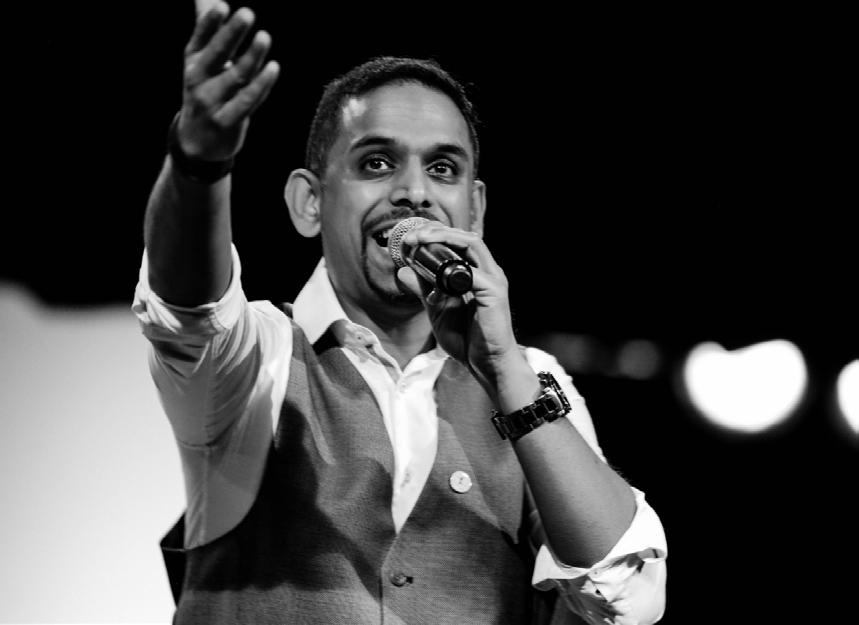
premiered one of Siyer's songs on their esteemed platform, adding to his growing reputation as an artist.
Now, in 2023, Siyer takes a step further, expressing his interest in becoming a Voting Member of The Recording Academy. This new role will enable him to not only submit his own works for consideration but also to participate in the crucial voting process that determines nominations and winners across various categories.

"The process was rightfully challenging as The Recording Academy asks for two strong recommendations from full-time musical professionals to even kickstart the process. It feels good to have earned it," Siyer admits, emphasizing the rigorous selection criteria he met.
As for his submission plans for this year, Siyer remains tight-lipped, leaving fans and music enthusiasts intrigued. "Let’s see what we come up with. At its very first stage,
When asked about the prospect of winning a Grammy, Siyer remains remarkably composed and focused on the journey rather than the outcome. "I am not thinking about the results or factors I cannot control. I am focused on the process, and I am enjoying the journey," he shares with unwavering determination.
As Siyer's musical odyssey continues, fans and the industry eagerly anticipate the magic he will create, waiting to see if destiny will shine a Grammy spotlight on this exceptionally talented Indo-Australian singer. With his passion, talent, and dedication, Siyer stands ready to make a profound mark on the world of music.
(G’day India)
NEW YORK, Jun 27: International students in Australia are frustrated as they are spending hundreds of dollars on mandatory English language tests that expire after two years, according to a Guardian report.
The students, who have to take the test again even if they have completed degrees in English and lived in Australia for years, say there is a conflict of interest between the organisations that set the rules and administer the test.

The Australian government's Department of Home Affairs accepts five English language tests for student visa applications, which includes IELTS, PTE, CAE, TOEFL and OET.
However, even after they have passed and finished their study in Australia, they have to retake language tests to enter some workplaces or undertake further study in Australia, such as Master’s or PhDs.
Yusef, a student who has had to pay $1,600 on four three-hour IELTS (International English Language Testing System) tests during his eight years in Australia, believes it is a conflict of interest.
“You have to again sit the test that universities have shares in... There is a definite conflict of interest,” he told The Guardian.
Sharing that one of his friends had to
take the test 12 times, Yusef told the paper that paying $400 for the test burns a hole in the pocket, especially after spending tens of thousands of dollars to study in Australia.
Most international students from countries like India, Pakistan, China, take the $400 IELTS test, which is jointly owned by the British Council, Cambridge University Press and Assessment, and the Australian company IDP Education.
Australian universities expect students to get a minimum IELTS score of 6.0-6.5 or TOEFL score of 90 or PTE score of 72 or CAE score of 60-79 or above for admission.
Australia's IDP has 19 public universities from the country as its shareholders, including Monash University, University of Melbourne, the University of Sydney and UNSW.
These universities are responsible for regulating IDP as its education agent, providing course selection assistance, visa and admission applications and accommodation advice.
A government inquiry into international education has said there should be more oversight of universities’ responsibility over education agents.
When it comes to IELTS, universities are regulating a company that has universities as shareholders.
The institutions are also reaping rewards from millions in profits generated by the IELTS test, the report, authored by Caitlin Cassidy, said.
"Forcing international students who already pay a fortune to study in Australia to repeat tests was yet another example of the way this country treats international students like cash cows to be milked," Mehreen Faruqi, spokesperson of The Greens education, told The Guardian.
“Insisting on multiple such tests, even for students who have completed tertiary education in English, has xenophobic undertones and clearly disadvantages students who didn’t grow up speaking English.”
The Australian government says it uses English language requirements to “manage immigration risk” and “ensure visa holders are able to fully participate in the Australian community”.
However, during a recent migration review, the federal government had flagged that it wasn’t “entirely content” with the current English language arrangements, The Guardian said, quoting Phil Honeywood, chief executive of the International Education Association of Australia.
(IANS)

NEW DELHI, Jun 26: Beginning July 1, Indian graduates studying in Australian tertiary institutions will be able to apply for work without visa sponsorship for up to eight years.
In addition, the allowable work-hour cap for international students will be increased from 40 hours to 48 hours per fortnight, along with a two-year work visa extension.
Earlier this month, India and Australia signed a migration and mobility partnership pact to open up opportunities for students, academic researchers and business people.
Coming under this pact, the Mobility Arrangement for Talented Early-professionals Scheme (MATES) will make 3,000 annual spots available for young professionals from India, allowing them to spend two years in the country without requiring visa sponsorship.
As a temporary visa programme, MATES includes graduates from recognised Indian universities with degrees in specialised fields of study.
The eligible fields of occupation for the MATES Visa, include engineering, mining, financial technology, artificial intelligence, information and communication technology, agricultural technology and renewable energy.
To be eligible for the MATES visa program, candidates must be below the age of 31, should have obtained their education from a recognised and verified university, and must be at the early stages of their careers.

The fee and visa processing time for the MATES visa is yet to be announced.
Australia said this April that it intends to overhaul its immigration system to speed up getting highly skilled workers into the country.
In a bid to lure skilled migrants, the government said the visa process for high-
skilled professionals will be made swift and easy, and steps would be taken to retain international students.
Also, starting July 1, the allowable workhour cap for international students will be increased from 40 hours to 48 hours per fortnight, along with a two-year work visa extension.
The revised cap will help international students to support themselves through their studies, while maintaining study as the primary purpose of their visa.
Student visa work restrictions were relaxed throughout the pandemic, and they were completely removed in January 2022 to allow primary and secondary student visa holders to work over their normal limit of 40 hours per fortnight to address workforce shortages.
The government also announced that a two-year extension of post-study work rights
is available for international graduates with select degrees that are in areas of verified skill shortage.
This extension will give eligible international higher education graduates an additional two years on their Temporary Graduate visa (subclass 485). The extension is in addition to the existing additional one to two years of work rights for eligible students who study, live, and work in regional areas.
For select Bachelor degrees, post-study work rights will be increased from two to four years, three to five years for select Masters degree, and four to six years for all doctoral qualifications.
There are 1,00,009 Indian students studying across various Australian universities, according to a 2022 Ministry of External Affairs data. (IANS)

LONDON, Jun 28: A majority of care workers sponsored for skilled work visas in the UK in 2022 came mostly from nonEU countries with India leading the pack and just one per cent coming from the EU countries, according to a new study.

The report by the Migration Observatory at the University of Oxford said the country's immigration system brought unprecedented numbers of overseas workers into the health and care workforce in 2022-3.
India was the top country of nationality for newly recruited overseas doctors (20 per cent) and nurses (46 per cent), followed by Nigeria, Pakistan and the Philippines, the study said.
India (33 per cent) was also among top countries of citizenship for workers using Certificates of Sponsorship (CoS) in 2022, followed by Zimbabwe and Nigeria.
Against a backdrop of staff shortages, the recruitment of non-EU citizens on skilled work visas in the health and care sector increased from 2017 onwards, with a particularly sharp increase in 2021 and 2022.
The Office for National Statistics (ONS) estimated that vacancies in the UK’s
health and social work sector peaked at 217,000 in July to September 2022 before falling somewhat in late 2022 and early 2023. Following this, the UK immigration system admitted unprecedented numbers of overseas health and care workers in the year ending March 2023.
In the year to March, 57,700 care workers received skilled work visas, according to the report.
The study, commissioned by the employment group ReWAGE, warned that the UK risks becoming too dependent on overseas care workers after nearly 58,000 visas were issued for the sector last year. Official figures showed overall migration into the UK for 2022 at 606,000 -- a 24 per cent increase on the previous high of 488,000 the year before.
“Health and care employers have benefited a lot from international recruitment. But relying this much on overseas recruits also brings risks," Dr Madeleine Sumption, director of the Migration Observatory, was cited as saying in The Guardian.
Dr Sumption said care workers on temporary visas are vulnerable to exploitation and "the rapid growth in overseas recruitments makes monitoring pay and conditions a real challenge".
The report comes with consultant doctors in Britain set to go on strike on July 20 and 21 for better pay. (IANS)

NEW YORK, Jul 10: Indian Americans Jayshree Ullal, Neerja Sethi, Neha Narkhede, and Indra Nooyi feature in the ninth Forbes’ Richest Self-Made Women list of 2023.
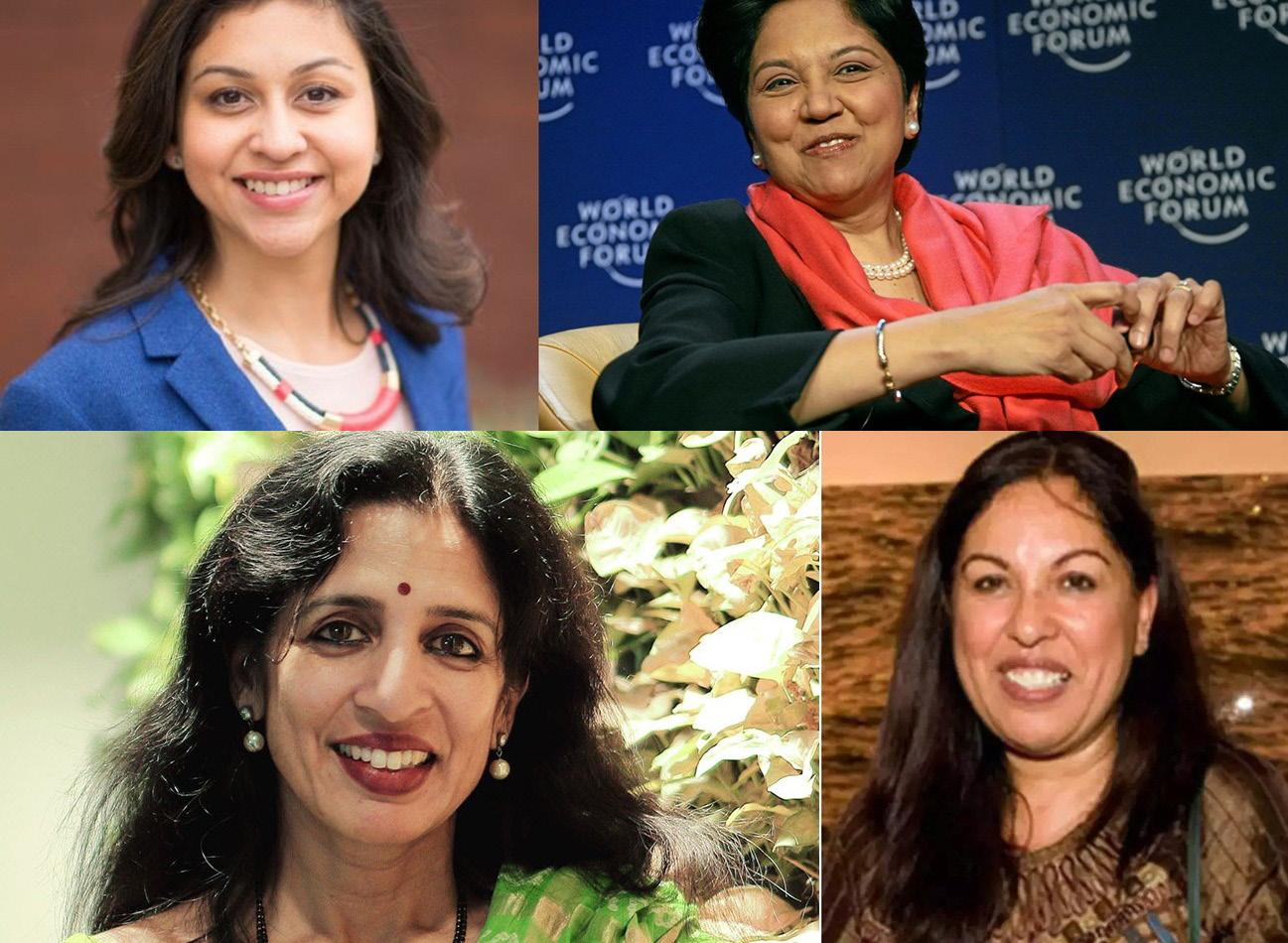
The four have been named to the list of 100 most successful entrepreneurs, executives, and entertainers in the US with a cumulative wealth of record $124 billion, up nearly 12 per cent from a year ago.
Silicon Valley engineer and Cisco veteran Jayshree Ullal, 62, leads the Indian American pack ranking at number 15 on the list with a net worth of $2.2 billion.
According to Forbes, Ullal joined the computer networking company Arista Networks as CEO in 2008 when the business had no sales.
The now publicly traded company, which she still runs, recorded $4.4 billion in revenue in 2022, up 48 per cent from the prior year, despite component shortages and supply chain challenges.
Neerja Sethi, 68, ranks at number 25 with a net worth of $990 million.
She co-founded IT consulting and outsourcing firm Syntel with husband Bharat Desai in 1980 in their apartment in Troy, Michigan. In 2018, they sold it to French IT firm Atos SE for $3.4 billion.
Software engineerturned-entrepreneur, Neha Narkhede, 38, announced her new company, fraud detection firm Oscilar, in March. She co-founded the business with her husband in 2021, funding it with $20 million and positions at number 50 on the list with a wealth of $520 million.
Ranking at number 77 with a net worth of $350 million is Indra Nooyi, the first woman of colour and immigrant to run PepsiCo, one of America’s 50 largest companies.
Nooyi retired as PepsiCo’s CEO in 2018 and as chair in 2019 after a dozen years in those roles.
Now a director of Amazon and health tech firm Philips, Nooyi joined scandal-plagued Deutsche Bank’s new Global Advisory Board last November.
“This list is a testament to the hard work and success of these women,” Kerry A. Dolan, Assistant Managing Editor, Wealth, at Forbes, said.
“We continue to see women breaking records and increasing their influence and power along with their fortunes, and each year new women in a variety of industries break into these ranks.”
The overall list is topped by Diane Hendricks, 76, of ABC Supply with a wealth of $15 billion.
backgrounds and fields whose contributions and actions enriched and strengthened American society and democracy.
From India, he is the only honouree in the prestigious Carnegie list, which has named more than 700 "Great Immigrants" since 2006.
With over 30 years of experience in key positions, Banga is expected to usher in transformative policies at the World Bank to combat poverty and address climate change, opening opportunities for people around the globe, a Carnegie statement said.
“We need to find ways to embrace the value and talent immigrants have to offer -not the least of which is their diversity. Their diverse perspectives and experiences make us stronger,” Banga was quoted as saying.
Earlier this month, Banga became the new president of the World Bank, the first-ever Indian American to lead the institution.
awarded the Foreign Policy Association Medal, Padma Shri and the Ellis Island Medal of Honor.
The Class of 2023 Great Immigrants has individuals from 33 countries, who, according to the Corporation, "have fostered opportunities for others through their work as educators, mentors, philanthropists, job creators, public servants, storytellers, and advocates".
“The 35 naturalized citizens honored today embody that tradition, reminding us that the contributions of immigrants make our country more vibrant and our democracy more resilient,” said Dame Louise Richardson, president of Carnegie Corporation of New York, and a naturalized citizen who first came to the US from Ireland as a graduate student.
President Ajay Banga has been named to this year's "Great Immigrants" list by the Carnegie Corporation of New York, which honours contributions by immigrants to American life. Indian American Banga, who became the 14th president of the top bank this year, was among 35 honorees from diverse
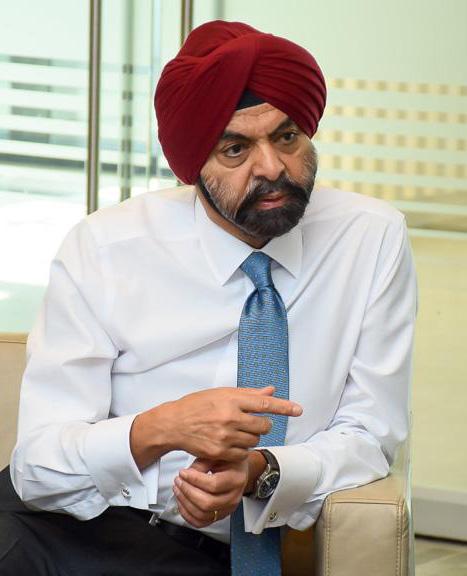
He started his career in India, spending 13 years at Nestle India and two at PepsiCo, and in 1996, he joined Citigroup, eventually leading the Asia-Pacific region as CEO.
Later moving to the US, he served as President and CEO of Mastercard for 12 years before being named executive chairman.
Among numerous honors, he was
Other honorees in the list are esteemed leaders in their fields, including two Nobel Prize laureates, an Olympian, a member of Congress, a university president, a public theologian and immigration advocate.
It also includes celebrities such Elle magazine editor-in-chief and TV personality Nina Garcia, bestselling novelist Min Jin Lee, seven-time Grammy Award winner Alanis Morissette, Hollywood star Pedro Pascal, and Academy Award winner Ke Huy Quan. (IANS)
The NOIM must be given to the celebrant no earlier than 18 months and no later than one month before the date of the marriage. A notice expires after 18 months, and a marriage must not be solemnised if the NOIM was received more than 18 months before the date of the proposed marriage. Parties are encouraged to produce their evidence of date and place of birth as well as evidence of identity and the end of any previous marriage (if relevant) at the time of giving the NOIM. However, these documents may be produced at any time before the marriage is solemnised.
For the purposes of complying with the timeframes required for giving the NOIM, it is sufficient for a celebrant to sight scanned (emailed) or faxed copies of the documents at the time of giving the NOIM, provided the originals are sighted by the celebrant before the marriage is solemnised.
Shortening of time - A prescribed authority may authorise a marriage to be solemnised despite the celebrant receiving the NOIM within one month of the date of the marriage. A list of prescribed
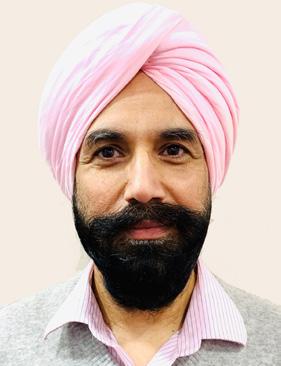
authorities is published on the Attorney-General’s Department’s website.
The five circumstances in which an application for shortening of time may be considered by a prescribed authority are set out in the Marriage Regulations. These are limited to: Employment-related or other travel commitments, Wedding or celebration arrangements, or religious considerations, medical reasons, Legal proceedings, or an error in giving notice.
If you have further questions, you may contact me on 0425 853 086 or navee64@gmail.com.
at launching the moon mission at the earliest date, which could be July 12 or July 13.
He said the launch window is there between July 12 and July 19.
According to Somanath, the Chandrayaan-3 spacecraft has been tested and encapsulated inside the rocket’s payload fairing/heat shield and the rocket -- LVM3 -- is getting ready at the Sriharikota rocket port in Andhra Pradesh.
The main purpose of Chandrayaan-3 is to safely land the lander on the moon soil. Following that a rover will roll out to do the experiments.
As regards the changes made in the lander this time as compared to the one that crash landed on the moon during the Chandrayaan-2 mission, the official said the lander will have four motors instead of five. The space agency has also carried out some changes in the software.

CHENNAI, Jun 28: Indian space agency ISRO is gearing up for its third moon mission -- Chandrayaan-3 -- slated between July 12 and July 19, officials said.
“We have the launch window between July 12 and July 19. The exact date has not been
finalised,” a senior official of Indian Space Research Organisation (ISRO), not wanting to be named, said.

Speaking to the media, ISRO Chairman and Secretary in the Department of Space, S. Somanath, said the space agency will look
As regards the naming of the lander and rover, the official said that it has not been decided yet.
ISRO might even retain the names of the earlier lander -- Vikram and Pragyan. (IANS)
one senior not feeling well, they showed up and gave their all. One particular moment that stands out is when we had a long shooting day and everyone was visibly tired, but no one gave up. It felt like a tight-knit family, united in their commitment to the project.
Q: How does the concept of miraculous healing through the power of happiness unfold in the film?
Q: What challenges did you face as a first-time filmmaker for "More than Cute"? How did you overcome them and what lessons did you learn?
A: Working with non-actors posed a challenge in capturing unrepeatable moments. Yet, I found beauty in the authenticity they brought to the screen. The editing process also revealed the unique qualities of documentary filmmaking, teaching me to appreciate the organic nature of real-life storytelling. Overall, I learned to value the genuine and unscripted aspects, embracing the beauty of simpler moments.
Q: What message does your documentary convey about age and intercultural understanding?
Filmmaker Joshinder Chaggar's documentary "More than Cute" challenges preconceived notions about ageing through the vibrant world of seniors' Bollywood dance. Inspired by personal experiences, Chaggar embarked on a journey to capture the essence of this intercultural setting, shedding light on the vitality and resilience of older individuals. Using storytelling and dance, the film aims to challenge misconceptions about age and promote intercultural understanding. Join us as we explore Chaggar's motivations, memorable experiences, storytelling approach, and the impactful message they hope to achieve with this remarkable documentary.
Q: What inspired you to create the documentary "More than Cute" and challenge preconceived notions about ageing through the theme of seniors
Bollywood dance class?
A: The inspiration for the documentary came when I started teaching the BollySeniors class and formed a close bond with the senior students. They defied my expectations of what it means to be "old." It made me question the meaning of age and perceive it as an attitude rather than a limitation. The seniors' vibrant attitude towards life was incredibly inspiring. I also noticed the lack of awareness and representation of this age group in the media, which motivated me to tell their story. The mix of older Caucasian women and Bollywood dance showcased the diversity and cultural exchange, making it a truly uplifting narrative.
Q: What were some memorable experiences or interactions you had while filming the seniors' Bollywood dance class?
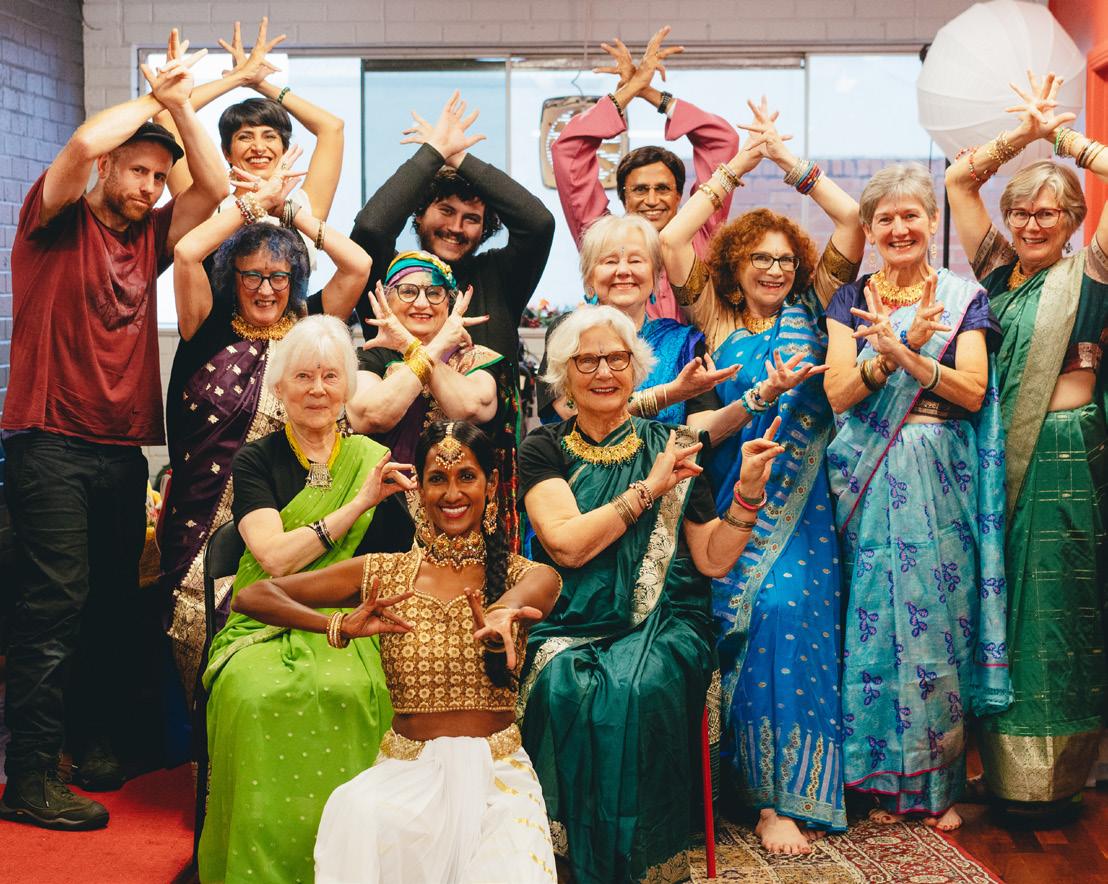
A: The most memorable aspect of filming was the incredible dedication of the entire cast. Despite facing challenges, such as
A: One of the women in the class shares her experience of going through cancer treatment in 2021. Despite the challenges, she continued to dance with the class online, finding joy and support in the process. She firmly believes that the happiness she derived from the movement and the encouragement from the group contributed to her recovery. Additionally, the deep bond of friendship within the class plays a significant role. These women, in their 60s and 70s, have formed meaningful friendships that bring them immense happiness and purpose in their lives.
Q: How did you capture the essence of the seniors' journey in the documentary?
A: Filming began in February 2020, using my phone. Over two years, I filmed them in different settings, including virtual sessions and outdoor locations. The footage served as valuable research, and interviews provided insights into their stories and perspectives on ageing. I carefully crafted a two-day story, allowing for organic moments. Meticulous pre-production ensured a clear trajectory for effective storytelling.
A: I aim to inspire viewers to challenge self-imposed limitations and embrace new journeys at any age. The story of Jaya Karan, a dance studio owner, exemplifies this as she pursued her passion in her 30s and thrived. The film also highlights the power of friendship, transcending age and culture, fostering generosity and open-mindedness. It emphasizes the transformative nature of intercultural relationships.
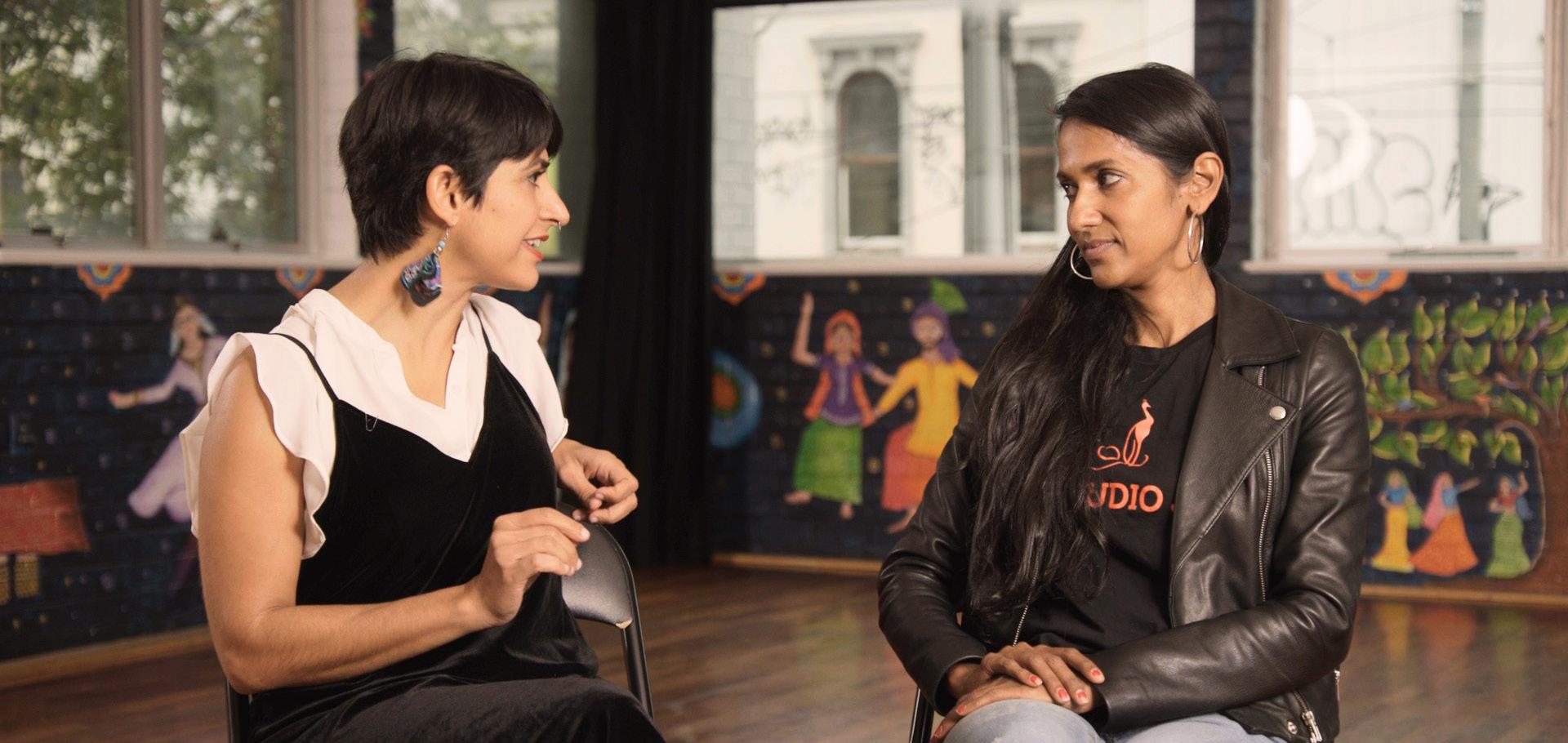
"More than Cute" is a captivating documentary that challenges misconceptions about ageing and promotes intercultural understanding. Through a seniors' Bollywood dance class, filmmaker Joshinder Chaggar captures the essence of resilience, friendship, and the transformative power of embracing new experiences. The film inspires viewers to reevaluate perceptions of age, break free from limitations, and foster meaningful connections. Chaggar's journey as a firsttime filmmaker revealed the authenticity of unscripted moments and the beauty of simpler storytelling. Ultimately, "More than Cute" celebrates the richness of life at any age and the power of friendship across cultures.
By Tonee Sethidifferent markets?
A. I had reached a point where Sharma’s Kitchen was a successful established brand, and I began to look for opportunities and challenges elsewhere. With my children also ready to enter the workforce I decided it was a fitting time to explore and begin a new venture overseas. After substantial studying of overseas markets particularly Europe and multiple trips I decided to setup another factory in Bulgaria. As all new businesses have there were a number of challenges that I faced some of which included language barrier and cultural differences of this new country. Secondly, finding and reaching out to new distributors in the UK and different countries in Europe with some many longestablished brands already present for a number of years was particularly difficult. After many years of perseverance and promotional exercises we can now say that Dairy Valley is the leading brand in the UK and Europe. I was able to travel frequently between Europe and Australia by setting up the right structure with a responsible team in each location.
Q. What were the key factors that contributed to the success of Sharma's Kitchen in Australia? How did you differentiate your brand from competitors if any when you started and capture the market?
Bipen Sharma, CEO and owner of Sharma's Kitchen in Australia and Dairy Valley in Europe/UK, has achieved remarkable success, bringing immense pride to the global Indian diaspora. In this interview, Bipen shares his challenges while establishing both ventures and how he triumphed, creating renowned brands in the dairy industry.

Starting with Sharma's Kitchen, Bipen recognised the need for quality Paneer and yoghurt for the Indian palate, leading him to produce and supply these essential food items. Overcoming the challenges of procuring milk and training non-Indian individuals, Bipen's focus on quality and his perseverance paid off.
Expanding to Europe, Bipen set up Dairy Valley in Bulgaria, overcoming language barriers, cultural differences, and competition to become a leading brand in the UK and Europe.
With strong teams, synergies between continents, and innovation, Bipen seamlessly integrates Sharma's Kitchen and Dairy Valley. His vision for global growth includes new factories and an expanding product range.
Bipen Sharma continues to make the Indian diaspora proud while shaping the dairy industry's future.
Excerpts from the interview with Bipin:
Q. Can you share the story including challenges behind the establishment of Sharma's Kitchen in Australia and Dairy Valley in Europe?
A. I was running a restaurant for a number of years when I realised, we were not able to procure good quality Paneer or yoghurt for the Indian pallet. I used to see my customers within the restaurant and notice they would order Palak Paneer and Matar paneer and not eat the paneer and leave it to the side. Also, you were unable to find any readymade paneer to purchase in stores. That was when I decided these essential Indian food items should be made and supplied to the Indian diaspora. Initially being the first Indian brand in the dairy industry, the procurement of milk was a very big challenge no one was ready to supply the smaller quantities of milk required in the early stages. I learnt the scientific processes involved in making the best quality product and determined what machinery was needed. It was a very unique process in which I had to personally train individuals of non-Indian background which in itself was a challenge.
Q. How did you manage to successfully establish and run two prominent brands in
A. The key factors would have been a focus towards the freshness and quality of the products we produced. We have always had a quality driven focus while maintaining a large level of importance on the authenticity of our products so that our customers could be transported back to India with each mouthful. Price was never the focal point when we wanted to deliver good quality products. With a view that if you follow your passion money will be a secondary benefit.
Q. How did your experience with Sharma's Kitchen in Australia influence your decision to expand Dairy Valley into the European market? Were there any lessons learned or strategies applied from your Australian operations?
A. The biggest lesson learnt in the success of Sharma’s Kitchen was that people always appreciate quality your consumers are very intelligent and able to differentiate between high- and low-quality food. Therefore, the same principles were applied when expanding Dairy Valley into the UK and Europe.
Q. Can you discuss the unique challenges and opportunities you encountered when introducing Dairy Valley in the European market compared to operating in Australia?
A. One of the most unique challenges was
the lack of understanding of taste related to Paneer and yoghurt. A lot of migration within the UK had occurred from East and South Africa along with Indians from India having migrated a very long time ago. This meant they had gotten used to Paneer which was of a very hard a firm texture. To then explain to them the traditional texture of soft creamy Paneer was a challenge. However, this provided me with an opportunity to be a different brand with a premium authentic offering.
Q. What strategies did you employ to adapt Dairy Valley's products to the European market while maintaining the brand's authenticity and quality?
A. In order to maintain the brands authenticity and quality it had become clear to me that a slow start through product tastings would be crucial in allowing customers to taste the difference in my products and gradually build a solid customer base.
Q. How do you ensure a seamless integration between Sharma's Kitchen in Australia and Dairy Valley in Europe, considering they operate in different continents? Do they share any synergies or collaborative efforts?

A. Despite being in different continents we have been able to integrate both brands in certain areas by allowing the strengths
of each to complement each other. For example, Dairy Valley in Europe has been very successful in producing packaged Indian sweets which we could also export to Australia and package under the Sharma’s Kitchen brand. Certain synergies also exist in related to marketing and promotional strategies.
Q. How did you build a strong team to support the growth and operations of both Sharma's Kitchen and Dairy Valley? What qualities do you look for when hiring employees and collaborators?
A. Like any business I always try to pick individuals who match my principles. I have always stressed from day one that all issues are born from the top management therefore if the correct systems are being followed by the top management it will always trickle down through the whole organisation. When engaging other companies’ services, I also ensure their values match with that of the company.
Q. Were there any cultural or language barriers you faced while establishing and operating your businesses in two different continents? How did you adapt your marketing and communication strategies to effectively connect with the local consumers?
A. Yes, there were most definitely cultural and language barriers when setting up in Europe however you must adapt to these differences as no market is the same. The same principals cannot be applied to each market and therefore a degree of openness and acceptance to change is required. Your marketing and communication strategies must reflect this. After reading an article about an Indian businessman in the Times of India I learnt that people make the mistake of treating each market similar to another. I kept this in mind and made sure I was ready to tweak my model to the market requirements.
Q. What role does innovation play in the development of new dairy products for both Sharma's Kitchen and Dairy Valley? Can you give us some examples of recent product innovations or launches?
A. Innovation is the basis of all development that we conduct for our new dairy products. An example of this innovation has included the ability to maintain the freshness of our products whilst extending
the shelf life without the addition of any preservatives. Recent product innovations include our extensive sweets range and with the setup of our new factories we are currently working on further product innovations to come.
Q. As the CEO and owner of Dairy Valley in Europe/ UK and Sharma's Kitchen in Australia, how do you manage your time and responsibilities between the two businesses?


A. Time management is key. I carefully manage my time with the time difference between both continents. Technology has made this much easier to facilitate. For example, when I start first thing in the morning it is the late afternoon in Australia, so I am able to receive all the necessary information to analyse and discuss all the key areas required. Once this has been achieved, I can then progress my day with the activities of Dairy Valley in Europe/UK.
Q. Looking ahead, what are your future plans and aspirations for both Sharma's Kitchen and Dairy Valley? Are there any new markets or product expansions on the horizon?
A. Looking ahead we have a global vision for both companies. Our new factories will be operational next year in India, Bulgaria and Australia. For example, the Bulgarian factory will then be able to cater to the North American and middle eastern markets to name a few. Our product range is continually growing and being improved. We will be looking at launching a number of exciting new products within the coming year.
current issues, such as how difficult it is for young people from different socio-economic backgrounds to buy a house.
Kumud says the best scene is in this last season between her and Kat Stewart, who plays Liz in the series. The two of them have fantastic chemistry on-screen and off-screen.
The scene taking the icing, especially the line: ‘People take a lot to me. It's my natural charisma my cooking my conversation and many other things. But in you I feel there's a crying need or there’s something else at play. I can feel it. I don't know whether it's your failed marriage or your loss of money or your profession or your failed marriage but there is a crying need. I can feel it is trying to fill the void in your life through me. And to me that was the best.’
Scenes like this have brought Kumud a fan following from Canada and overflowing messages of appreciation for earlier seasons from UK and Sweden. As Five Bedrooms is now shown in five countries and all seasons are available in Paramount Plus.
But Kumud is very humble and realises that this well-written drama is successful because of the talented cast, directors, and scriptwriters.
It’s almost surreal to interview Kumud Merani, who is hailed as the mother of all news presenters and broadcasters in Australia. With a career spanning fifty years, starting with being the first news presenter for Mumbai Doordarshan in 1972, she’s been interviewing people all her life – she had once interviewed me.
Now it is my delight to track her achievements as a person and as an artist.
When she moved to Australia with her engineer husband, two-year-old son and six-year-old daughter, she thought she had to give up everything, but she was fortunately mistaken.
As history goes, in 1985, she became the news presenter for World News on SBS for a thriving career, surviving thirty-five years as the executive producer for Hindi programs. She retired just two years ago but she’s just beginning to have fun.
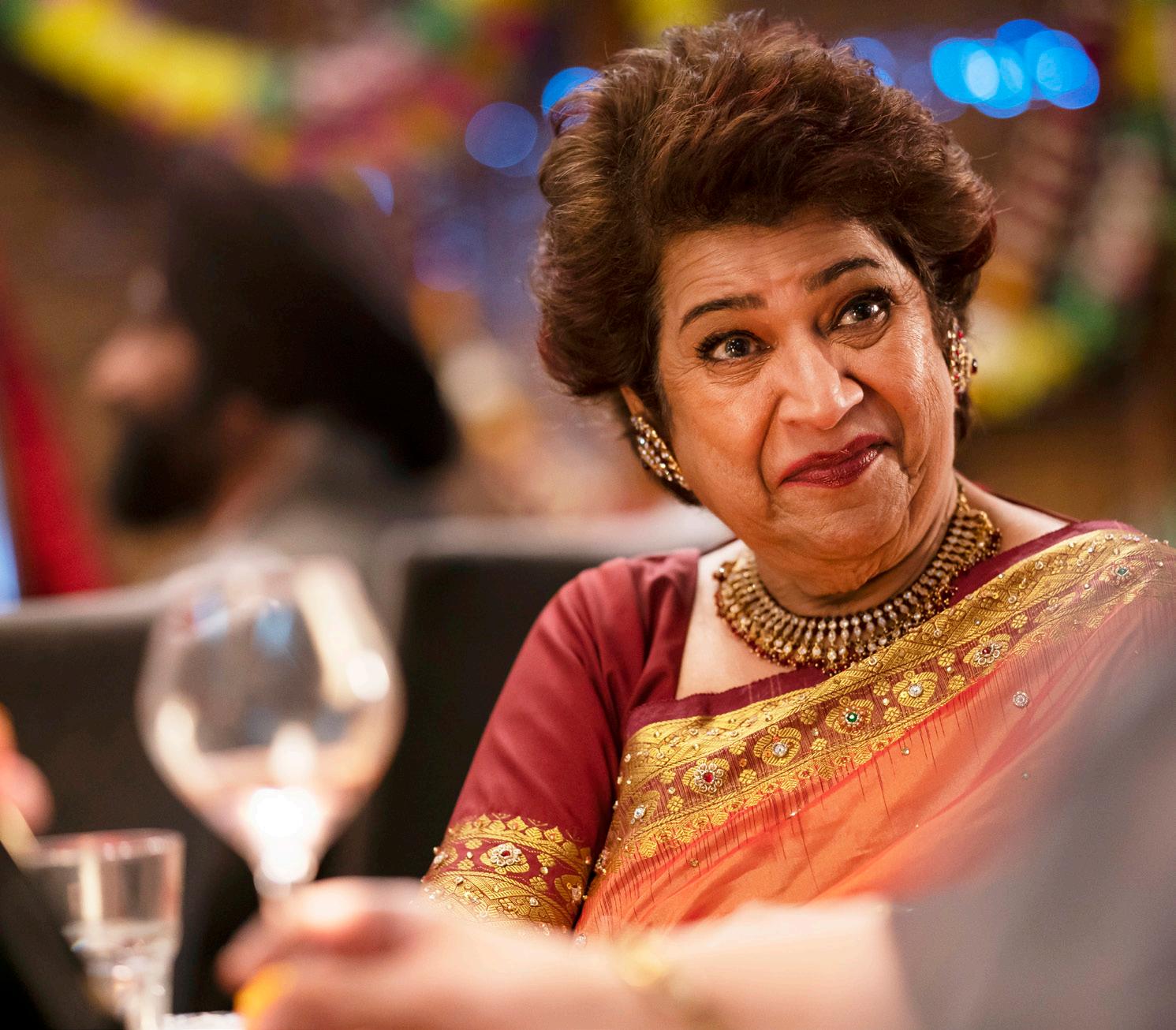
Kumud is the recipient of about thirty awards. Apart from the several community awards, three were from different NSW premiers, an award from NSW Parliament as a top ethnic broadcaster and journalist, and two prestigious international awards.
She has produced several theatricals, successfully written dramas for radio,
staged dramas and translated works from Marathi. Her theatrical career, especially with the English play The Nautch Girls, led her to small roles such as in the 2015 film Unindian (starring Brett lee). But the 2016 short film Spice Sisters, where she played the protagonist, made everyone notice her –including one of the Five Bedrooms writers.
After a successful audition, the character of Manju Sethi was Kumud’s to explore, and she successfully brought the supporting character to life.
A supporting character with a fairly big role, Kumud was in all the seasons except for season three due to COVID lockdowns, as the entire series was shot in Melbourne. Restrictions didn’t permit her to travel from Sydney and the entire script had to be rewritten.
But Manju’s a strong, astute and proud character translated beautifully on screen, playing opposite actor Roy Joseph who plays Kumud’s on-screen son as a doctor. Kumud relates to Manju’s vulnerability and tough love; she says it’s a catharsis for her to say the things that she would never say to people in real life.
Five Bedrooms is Australian drama at its best. People got addicted to it for numerous reasons, especially as it tackles
The taste has been very sweet for Kumud so far; she’s been enjoying the ride with more roles coming her way. It’s all due to the exceptional growth of the Indian community, now the second largest migrant community in Australia based on the last census.
In Australia, Kumud points out that we Indians are cricket tragics and no doubt they also love to watch TV and films. It is time to welcome South Asian people in the mainstream, whether they are born here or migrated just like Kumud. They are hungry to be seen on screen, and in any fields of the arts. It’s the time to be as authentic as possible.
As a person, Kumud is satisfied, and filled with gratitude and grateful to God for getting more than she’s deserved.
From all of us at G’day India, we wish Kumud Merani and the epic cast and crew of Five Bedrooms all the very best for the Logies.
As Robert Frost once said, ‘The woods are lovely, dark and deep. But I have miles to go before I sleep.’
By Nandita ChakrabortySomen Debnath, a brave Indian national, embarks on a remarkable odyssey to bicycle around the world, venturing through 191 countries spread across 7 continents. His noble mission is dedicated to spreading awareness about HIV/ AIDS and promoting Indian culture through seminars. Commencing his expedition on May 27, 2004, right after completing his Bachelor of Science degree in Zoology at the University of Kolkata, India, Somen also holds a 'Visarad' degree in Fine Arts from the University of Sarbabhartiya, Kolkata.
Traversing an astounding distance of 188,500 kilometres on his bicycle, Mr. Debnath has already covered 180 countries, revealing a strong determination to reach his goal. His journey can be described as an incredible feat of human courage and endurance:
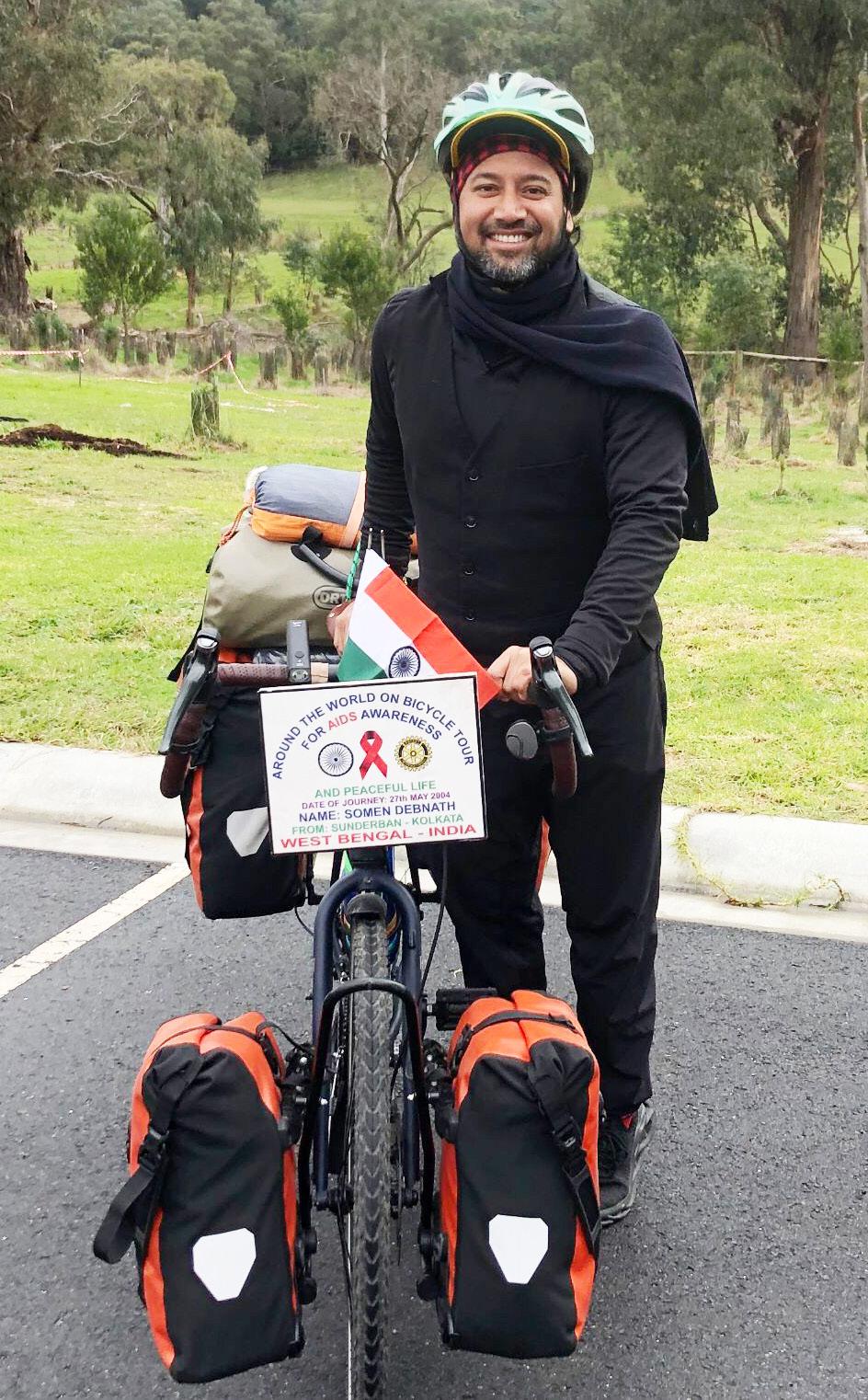
• 2004-2007: Somen explored 28 states and five union territories of India, setting the stage for his global quest.
• 2007-2009: Adventuring through 23 countries in Asia, he embraced the diverse cultures and landscapes of the continent.
• 2009-2012: Enriching his journey with experiences, he travelled through 50 countries in Europe, including the remote wilderness of Greenland.
• 2012-2015: Venturing into the unknown, Somen embarked on a journey through 52 countries in Africa and eight countries in the Middle East.
• 2015-2020: Challenging the extremities, he covered 48 countries in South and North America, making his way from the Antarctic/Southern Ocean to the Arctic Circle/ Arctic Ocean, a total of 174 countries.
• 2020-2021: The COVID-19 pandemic disrupted his plans, imposing travel restrictions in China and leading to a lockdown in New Zealand.
• 2022-2023: Continuing his extraordinary journey, he ventures through Australia, Oceania (Polynesia & Melanesia), Southeast Asia, and ultimately returns to India, with ongoing travel through 15 countries.
The genesis of Somen's mission lies in a poignant encounter when he was just 14 years old. Deeply moved by an article titled "AIDS is more deadly than cancer," he witnessed the plight of a homeless individual forsaken by society near a medical college in Kolkata. Determined to raise awareness about HIV/AIDS, Somen sought answers from his teachers, but their inadequate
responses spurred him to undergo special training from the Society of West Bengal State AIDS Control (WBSACS). Thus, he began his awareness campaign on HIV/ AIDS in his school, driven by the urgency to address the stigma and ignorance surrounding this preventable disease. Propelled by a vision, he expanded his campaign beyond Indian borders, aiming to impact a global audience.
Throughout his awe-inspiring journey, Somen Debnath encountered numerous challenges, trials, and tribulations. One significant incident was his capture by the Taliban in Afghanistan in 2007. Held captive for 24 harrowing days, he faced constant fear and uncertainty. However, his courage, dedication to peace, and commitment to nonviolence eventually led to his release. His unwavering spirit and resilience exemplify the triumph of human courage over adversity.
In an interview with Gday India in Melbourne, Somen Debnath shed light on his life-changing experiences and offered valuable insights gained from his global travels:
Q: Having visited numerous countries, how has your perception of the world changed?
A: Yes! It changed a lot. I have learned to live life in a positive and optimistic way.
Q: What was the most extreme challenge you faced during your tour and how did you overcome it?
A: Living with a dream. I love to live life and strive for balance with experiences.
Q: Were there any moments during your tour when you felt like giving up? What motivated and kept you going despite the challenges and obstacles you encountered along the way?
A: I never think of giving up. Challenges are experiences that I embrace. I love to take on challenges and live with them. "The world is the great gymnasium where we come to make ourselves strong" as said by Swami Vivekananda.
Q: What are your impressions of Australia and its people? Did you come across any unique experiences or interactions during your time there?
A: Australian people are friendly, hospitable, love to explore the world, enjoy sports, and have a passion for travel. I admire their positive and optimistic way of thinking.
Q: As you near the end of your tour and head back to India, what is the thing you missed the most about your home country during your travels?
A: I don't miss anything in India. I consider India to be present in every country I visit. I want to return to India because I made a promise to my country, and I intend to keep that promise.
Somen Debnath's exceptional journey, from being held captive by the Taliban to traveling thousands of kilometers, stands as a testament to human resilience, determination, and the power of raising awareness for causes that matter. His experiences and encounters have shaped his perspective, fostering a global belief in peace and understanding among individuals from diverse backgrounds. As his mission continues to inspire and educate others, Somen Debnath's remarkable tale of courage and compassion unfolds, leaving an indelible mark on the world.
By Tonee SethiChildhood memories are always the best, and they become unique if one is bilingual in India. This is especially true when it comes to food, and if you are growing up in Mumbai with a Gujarati father and a Maharashtrian mother's cuisine.
Meet forty-four-year-old chef Rohan Desai, whose childhood is packed with memories of Charni Road in Mumbai and the nostalgic waft from an old Iranian restaurant in Ballard Estate.
For a limited time only this July, Crown Melbourne’s Evergreen restaurant has made these memories possible for their
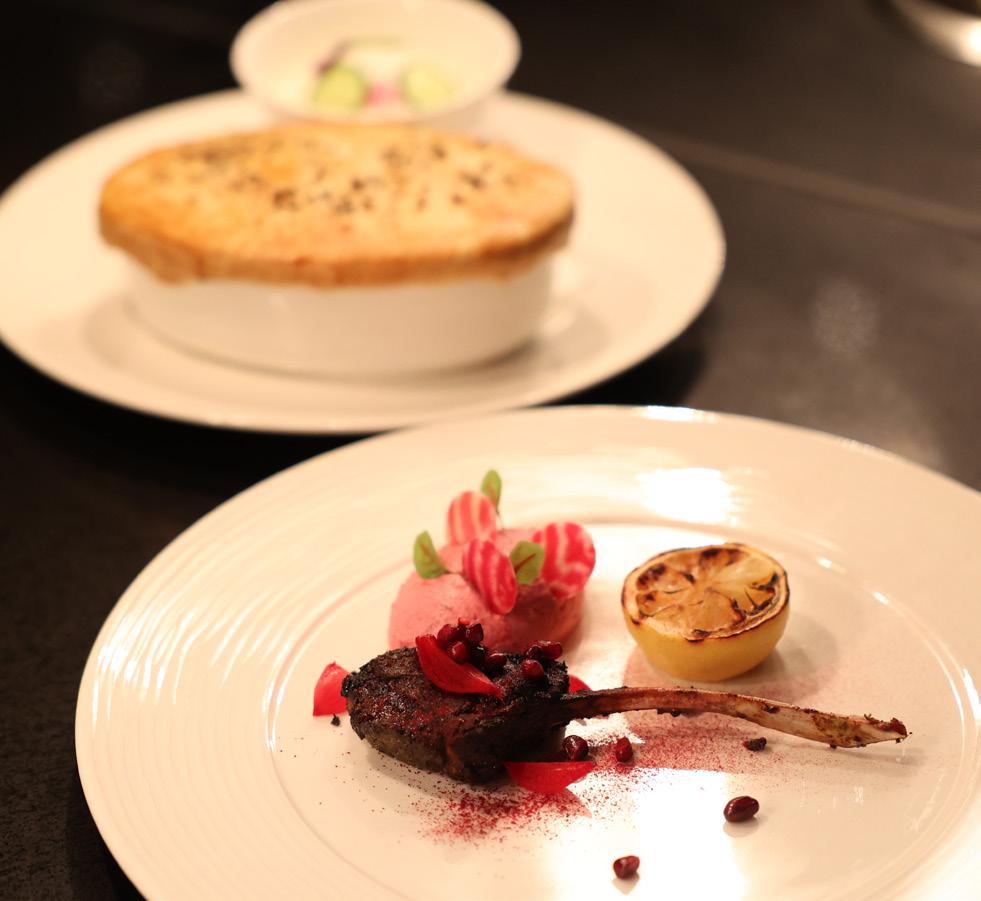
resident chef in a pop-up, titled ‘Flavours of India’.
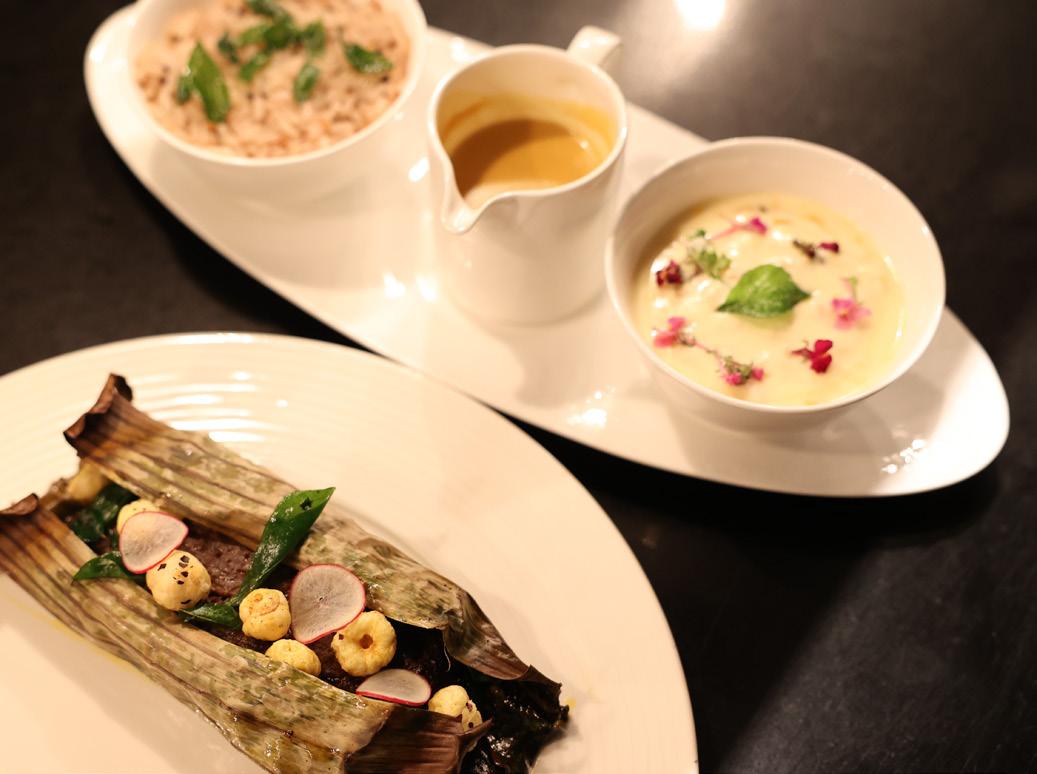
In 2010, when Rohan first came to Australia, he started his career at Shannon Bennett's Café Vue at Tullamarine. Despite being new in the country, he was quick to seize an opportunity at Crown, where he soon began creating food for prominent Indian corporate travel businesses. These events hosted four to five hundred people, and the buffets overflowed with delicious, robust cooking.
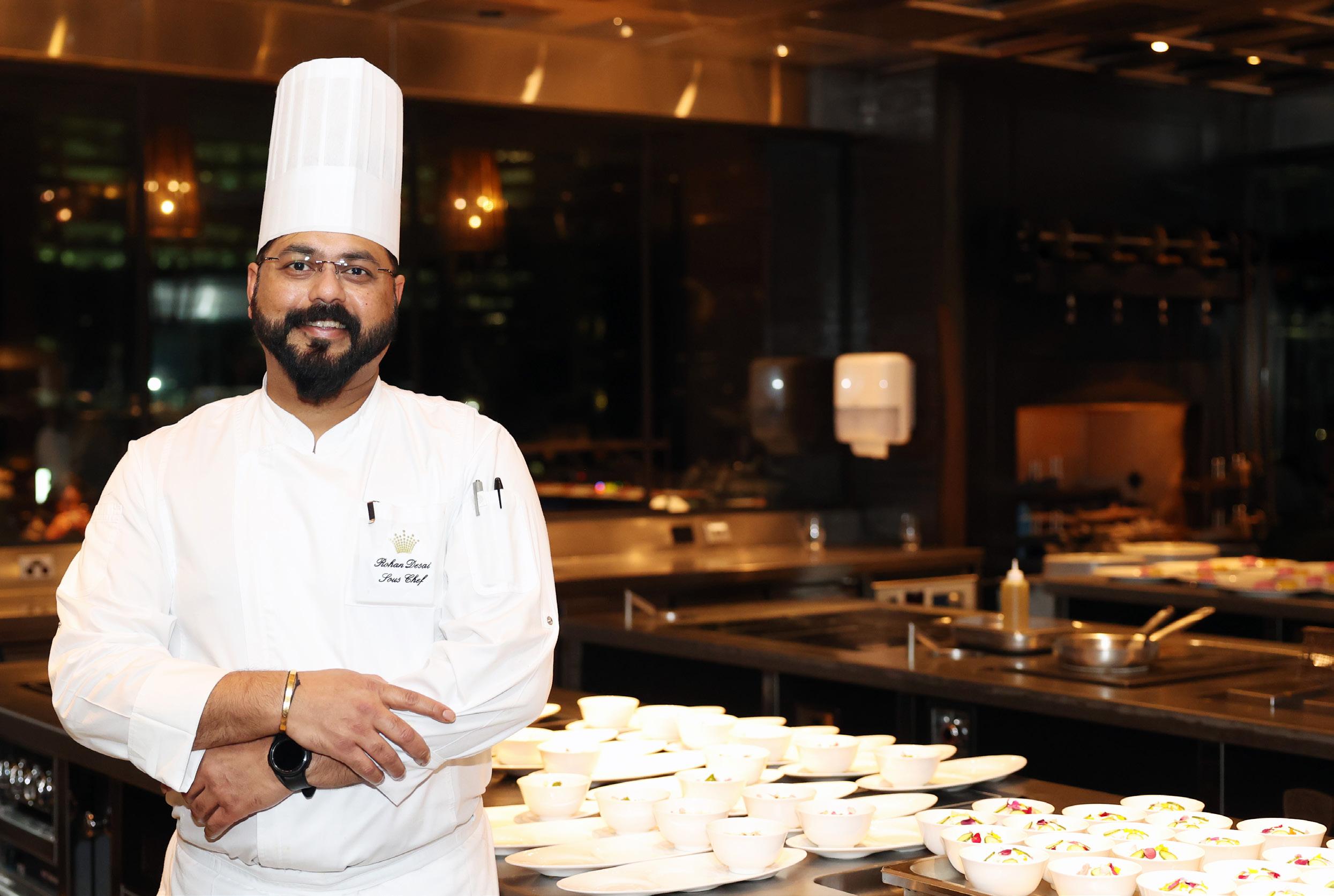
The opulent Evergreen restaurant once belonged to Fat Duck and Dinner by Heston Blumenthal. After their departure, the fully functional and well-designed kitchen has consistently hosted pop-ups by celebrity chefs like Sarah Todd and Peter Kuruvita, with Rohan serving as their sous chef. The exponential boom of Indian culture and food in recent years prompted EGM from Crown to
take a step back and develop a concept where they wanted Rohan to lead a pop-up.
So, the rest is history, as his childhood memories took shape behind The Flavours of India.
Indian food is always considered a shared plate with curries, but the taste of India is much more than just a curry; it has so many layers of textures, techniques, and colours that it's hard to elevate the base recipes with a unique plating.
The parental kitchen in Mumbai was
the starting point for this foodie, who grew up watching his mother and grandmother cook dishes from Maharashtra and Gujarat. Rohan's notorious cheekiness often got him into trouble, resulting in him having to sit with his mother in the kitchen, where he would taste her food. Since then, the taste of authenticity has lingered with Rohan, and it truly manifests in this fine dining experience.
"I understand it's all about curries and authenticity in the cooking and everything, but then I've always been trying and getting, you know, inspired by some of the chefs and trying to elevate this cooking and bring it to a level where we can also do plated Indian meals."
As soon as you enter the restaurant one is welcomed with a vast, colourful bowl of papadums with coriander and peanut chutney dip, a fitting tribute to Gujrat, where papad or papadum is the quintessential snack with every meal. It's bound to make a heart sing. Mixing with the fantastic view of Melbourne city in the backdrop.
Then came the Murgh Keema Salli/ Pav (chicken mince and soft bread rolls). The old Iranian and Parsi hotels of South Mumbai, once a thriving culture were home to Keema Pav, a staple breakfast served in most of these hotels. However, Britannia Café, located in the Ballard estate, known for stately colonial architecture, is still famous for its Keema Pav.
The taste and charm of Britannia café was in that big bowl of chicken mince that twists with fried eggs and chives on top. The house blend spice in the Keema with the soft buns is a gastronomical marriage made in a plate. So, is the second-course Barramundi Pollichatthu, also a recreation of Rohan's Keralite neighbour's Nayyar Family dish.
Nayyar's grandmother would prepare the fish in a clay oven, slowly cooking the sauce for eighteen hours, and then bake the fish on a banana leaf. The sweetness of the onions shines through in the beautifully cooked fish, which is served with a trio plate of matta rice. The pumpkin raita is a favorite accompaniment.
The third course began with the Pahadi lamb chops, delightfully marinated in mint, which was a specialty of a Taj hotel chef from Himachal Pradesh. These chefs, often hailing from Garhwal in the foothills of Uttarakhand, would send the kitchen staff and sous chefs away so that they could mix their family-inherited secret spice blends into these kebabs. However, Rohan was the fortunate one who received the Chef's secret blends and brought them to the plate in Melbourne.
Similarly, Murgh Parda Biryani, the end of the fourth course, is a generous slowcooked chicken with saffron and roseinfused basmati rice. An inspiration from Hotel Shalimar’s biryani behind Ballard Estate, cooking in a big brass vessel, layered with curry, rice, and rice dipped in saffron milk, a process that takes nearly hours to perfect.
Rohan's memories of Shalimar brought
the biryani in dumpukht style, cooking in a clay pot, covered with puff pastry crusted with cumin, fennel, and black sesame seeds served with smoked mint and lemon yoghurt.
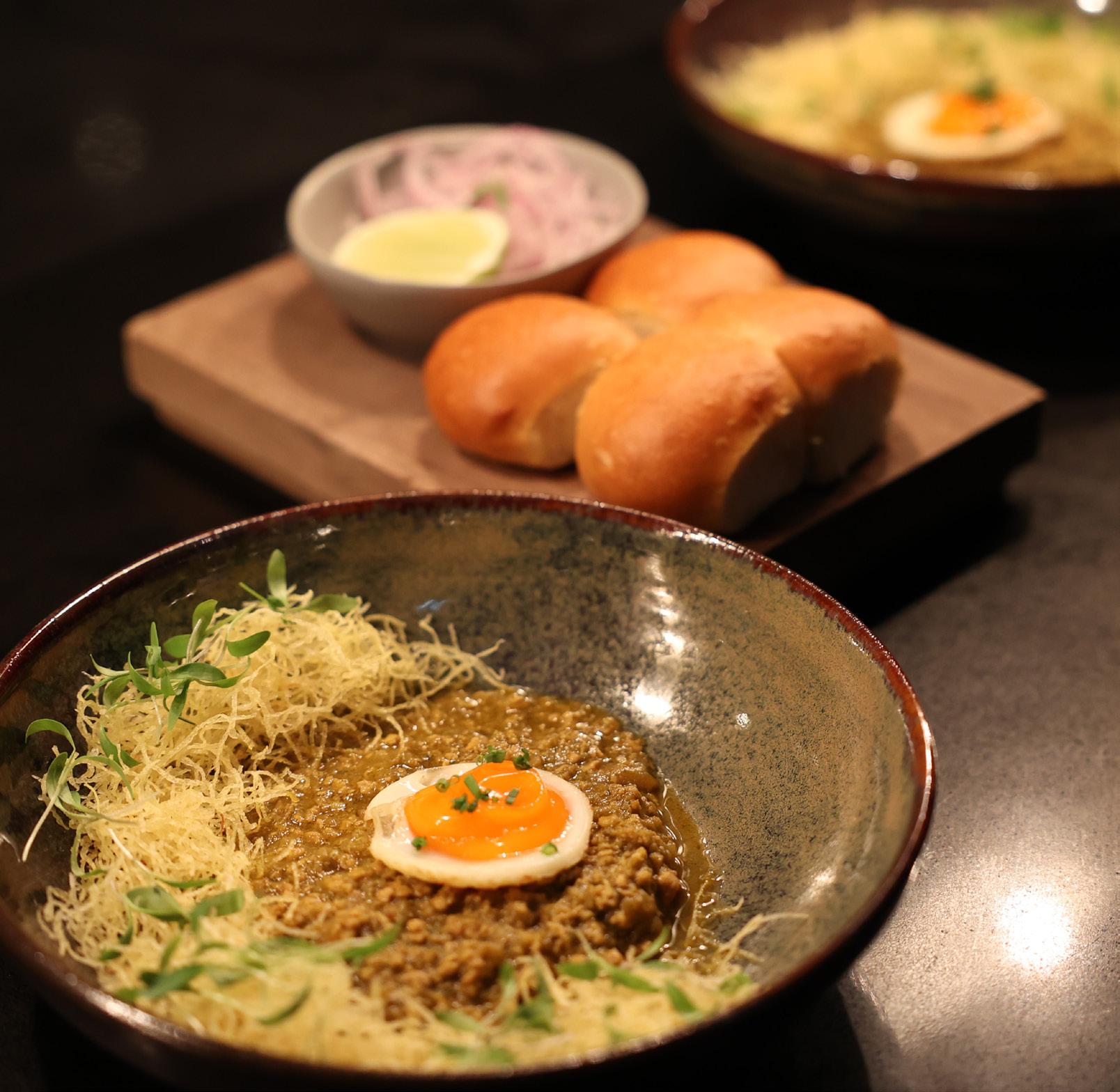
The piece de resistance was the whimsical childhood memories in a bowl; the humble rasmalai, the surprise element hidden beautifully under layers of panna cotta, rose gel and pistachio ice cream. The beauty of the bowl is the fairy floss on top.

Inspired by the hot months of April and May in Mumbai, the delicate cold leftover ras malai milk along with the cotton candy and the kulfi man who visits the neighbourhood with his aluminium cones in these summer evenings always took him back to the lanes of Mumbai.
Rohan stuck to originality, not compromising on potion size, plating them with his artistry, bringing the theatre of childhood alive. Crown played along with his ideas, successfully training all the front house team to talk and present the menus to the public.
In this two-hour session, every patron is recommended to take a break in between courses, either to enjoy a glass of Sauvignon Blanc 2021 or the Oakridge Botrytis Pinot Gris 2021 with dessert.
Bring along an empty stomach, a loved one, or even a friend, and enjoy this four-course menu that
transports you and your senses to the magical place of Rohan's childhood. If you are from Mumbai or even India, you will experience it exactly as he did.
We extend our best wishes to Rohan and his fantastic team, the true artists in the kitchen who often go unnoticed amidst the glamour of the food industry. We also congratulate the entire front-of-house staff at Crown.
Visit Flavours of India, EVERGREEN Melbourne Crown 6TH - 23RD July.
By Tonee & NanditaScorching heat in summer can hinder your vision if left unprotected. During the peak hours of the day, particularly, when your eyes are exposed to direct sunlight, this can cause several eye problems. The existing burden of eye diseases globally is enormous with approximately 2.2 billion individuals having a near or distance vision impairment, out of which, almost half of the cases could have been prevented if minimal preventive measures like adhering to protective gear, while stepping out in the sun among others were taken timely.
During summers, not only does your skin need to be safeguarded from UV rays, but it’s also equally important to take precautions to protect your eyes and keep them healthy. From using eye drops to covering your eyes with UV-protected sunglasses, these simple yet effective tips will help you keep your eyes healthy and happy all summer long. Here are some best practices that may help save your sight during summers:
Ensure that eyes remain hydrated: Yes, hydration is the key. During the summer season, dry eyes is a common phenomenon. Even strong winds wrapped with increasing heat during summers can cause serious dehydration and irritation in the eyes, often resulting in dry eyes condition. Hence, an adequate amount of fluid that can assist your body in producing protective tears is essential. Drinking
alcohol and caffeine can have an adverse effect on the body, so the less the better. Choose the right pair of shades to avoid conditions like photokeratitis: The harmful Ultraviolet radiation (UVR) can cause photokeratitis or photo conjunctivitis, a condition also known as snow blindness. Continuous exposure to UVR, especially to UVB rays that has a shorter wavelength can lead to cataract development, pterygium, etc. Therefore, choosing the right shades is imperative for the protection of eyes.
Protect your eyes during swimming: Chlorine that is mostly found in swimming pools can have an adverse effect on your eyes. This is why it is advisable for you to wear swimming goggles to protect your eyes from the swelling, burning, and itching owing to chlorine exposure.
Keep eyes hydrated with eye drops: Not only your skin, but your eyes also need a generous amount of moisturisation through artificial tear drops. With long exposure to blue rays generated from electronic devices, artificial tear drops have become imperative to modern eye care. With the rising pollution levels and soaring degree, it is obvious to feel dehydrated during summers. This serious dehydration makes it harder for the body to produce tears, leading to dry eye symptoms and other vision problems. Along with prescribed artificial tears, it is imperative to drink
plenty of water, which reverses negative effects of dehydration.
Do not rub your eyes: Maintaining hand hygiene is imperative for eye health. It is a common practice to rub our eyes with our hands, which can cause eye infection. By washing your hands thoroughly, you can protect your eyes from most communicable diseases, including conjunctivitis. Especially, in cases like eye surgery such as LASIK, cataract surgery, or glaucoma shunt surgery, the eyes are more susceptible to infection. It’s best to wash your hands before treating your eyes. Avoid rubbing them altogether.
Sleep well and refresh your eyes: Last but not the least, it is imperative to get a good night’s sleep. This will provide your eyes with adequate rest. Your eyes perform a wide range of tasks throughout the day and need rest. It is highly recommended to keep the eyes replenished with a proper sleep schedule.
By following these simple yet effective tips, you can keep your eyes healthy all summer long and protect the eyes from prolonged effects of sun rays. With these expertrecommended eye care tips, you can enjoy your summer activities, while keeping your eyes protected. And yes, don’t forget to go for eye check-ups at regular intervals.
 By Dr. Rishi Raj Borah
By Dr. Rishi Raj Borah
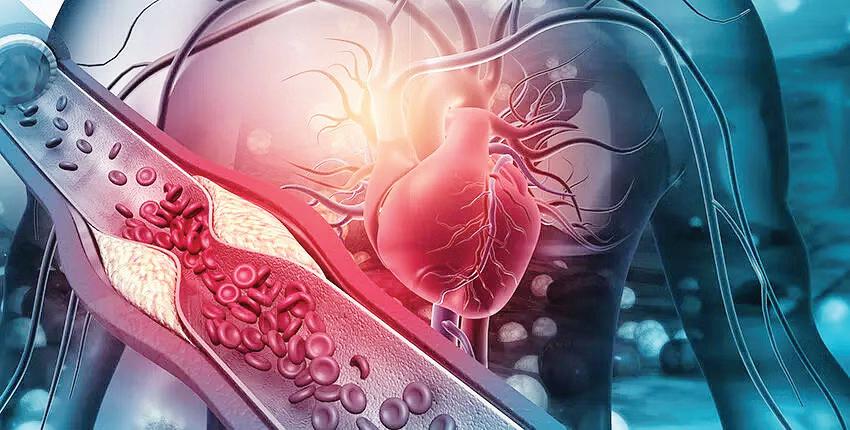
Keeping your heart healthy is crucial for overall well-being and longevity. While there are various factors that contribute to heart health, including lifestyle choices and genetics, incorporating the right oils, managing salt intake, and engaging in regular exercise can significantly contribute to maintaining a healthy heart.
However, in the pursuit of a healthy heart, people often find themselves bombarded with conflicting information, such as what should they opt for -refined oils, ghee, or butter or what type of exercises are truly beneficial for their cardiovascular health?
“When it comes to oils, many have touted the benefits of switching to refined oils. However, emerging research suggests that the age-old tradition of using ghee or butter might not be as harmful as once believed. These natural fats, consumed in moderation, can offer vital nutrients that support heart health,” Dr Haresh G. Mehta, Consultant-Interventional Cardiologist, SL Raheja Hospital, Mahim-A Fortis Associate said.
While refined oil is the best, experts suggest people should choose oils that are MUFArich and high in omega-3 fatty acids like rice bran oil, canola oil, and olive oil.
Moreover, to keep the heart healthy people are advised to eat heart-friendly food which is high in complex carbs, with healthy proteins & fats, such as millet, oats, brown rice, lentils, eggs, lean meats like chicken, fish, a lot of nuts and seeds as they are high on omega 3 fatty acids.
However, for a healthy heart, it is advised to reduce the intake of fried foods, simple sugars, and high-calorie sweetened beverages. The debate over which type of salt to use has gotten a lot of attention.
“While many advocate for low-sodium options, recent studies suggest that a moderate intake of iodized or sea salt may offer essential trace minerals that are beneficial for cardiovascular well-being. The key lies in moderation and avoiding excessive salt consumption, regardless of the type,” Mehta said.
According to doctors, the hidden sources of salt which cause major concern are baking soda, pickles, papads, and packaged foods as they are very high in sodium.
As for exercises, the best approach involves a combination of cardiovascular workouts and strength training.
“Exercise is key in the management of
heart disease, one should have an active lifestyle. Incorporate both forms of exercise which are aerobic and anaerobic forms, like walking, yoga, swimming, cycling etc,” Ritika Samaddar, Chief Dietitian, Max Healthcare, said.
Engaging in activities like brisk walking, swimming, or cycling improves heart function and boosts overall fitness.
Further, Samaddar advised that people should avoid very heavy and strenuous exercise, especially if one has a history of cardiac issues.
About 30-45 mins of exercise daily is recommended by experts, plus doing meditation or yoga is also recommended as it helps to reduce stress -- a major causative factor for heart disease.
According to doctors, the quest for a healthy heart demands a nuanced understanding of the choices people make.
While refined oils, ghee, butter, different salts, and exercises can all play an essential role -- moderation, informed decisions, and professional guidance remain the key pillars of maintaining cardiovascular well-being.
By Shrey Srivastava


“Much has been said and done about the global dating patterns, but this time, we wanted to shed some light on the up-and-coming desi online dating trends and specifically observe GenZ Indian daters’ behaviour. We have noticed that approximately 44 percent of the participants have been a part of more than one trend, with Delushionship and Evil Dead Rise on the lead,” says QuackQuack’s Founder and CEO, Ravi Mittal.
Celebrating its 25M milestone, India’s homegrown dating app, ran a survey among its GenZ users to find out the latest scoop of the virtual dating world. 15,000 men and women between 18 to 26 participated in the survey.
The individuals taking part came from tier 1 cities -- Delhi, Mumbai, Kolkata, Bangalore, and more and tier 2 cities -- Surat, Lucknow, Jaipur, Bhopal, Patna, Indore, Kochi, Kanpur, and Guwahati. The participants of the survey are self-employed, working professionals, and students.
39 percent of survey participants disclosed being in a “delusionship” at least once in their dating lifespan. Explaining this trend, they said “delusionship” is a state of mind wherein the person imagines an entire relationship, starting from proposing to ending in marriage and kids, without even making a single move on their crush. It’s all in their heads, and 29 percent of these
people who revealed their delusionships are introverts.
Extroverts are also a part of this trend, and they think it’s more common than most people care to admit. Users from both tier 1 and 2 cities alike have experienced this intense “obsession and daydreaming,” as they termed it. It builds slowly and steadily, but thankfully, it does not last long. If it does, that no longer comes under the delusionship category.
Exes trying to re-enter with new and upgraded fake promises is not new, but GenZ daters have certainly given it a fresh and fancy term- “Evil Dead Rise”. 37 percent of dating app users between 18 to 22 have admitted that they have been on the receiving end of the Evil Dead Rise, and the term fits the trauma that comes from rehashing the past.
Seven per cent of daters from tier 1 and 2 cities admitted being the Evil Dead Rise in someone’s life, and they justified that their intentions were not as evil as people are making it sound. For every trend, perspective matters.
Shining light on new trends, the survey shows “Chameleoning” is on the lead- this trend is where daters keep changing their personalities, likes, and dislikes to fit their matches’. The app has even seen some
users change the same in their profile bios and preferences.
23 per cent of women between 23 to 26 revealed that time and again, they have altered their persona to be more likable, and they think almost everyone does it, some more subtle than others.
31 per cent of men between 21 and 25 have done the same to impress their date. 36 per cent of men and women opined that while chameleoning is common, and almost everyone does some minor alterations, any major change is not sustainable; sooner than later, people’s true colors start showing, and that can be more damaging.
Among other intriguing trends, the survey shows “Fake-Up” is stealing the limelight these days. Fake-Up is the trend where GenZ daters, especially single men, fake a breakup to gather sympathies from female daters and strike up a conversation with the end goal of dating them.
18 percent of male daters from metros and smaller cities disclosed using fake-up stories to talk to their crush.
Compared to men, the number of females participating in this trend is much lower, and 23 per cent of women above 21 believe that women’s compassion makes it easier for men to use fake-up to slide into their DMs.
Here are ten amazing facts about natural diamonds to help you understand these magnificent works of nature that have captured people’s attention for ages with their eternal beauty and charm.
Origin and Formation:
Natural diamonds are formed deep within the Earth’s mantle under extreme pressure and temperature conditions over billions of years. They are created from carbon atoms - the same element found in pencil graphitearranged in a crystal lattice structure, making them one of the hardest materials known to man.

Rareness and Rarity:

Despite their popularity, natural diamonds are rare. Only about one in a million diamonds mined worldwide are of gemstone quality. This rarity adds to their value and allure.
Geological Sources:
Natural diamonds are sourced from numerous geological locations around the world. Major diamond-producing countries include Russia, Botswana, Canada, DR Congo, and South Africa. Each region produces diamonds with distinct characteristics, contributing to their unique beauty and desirability.
Age of Diamonds:
Most natural diamonds are estimated to be billions of years old, dating back to the formation of the Earth’s crust. Thus, wearing a diamond is nothing short of wearing a piece of ancient history.
Color Spectrum:
While diamonds are often associated with the
traditional white colour, they come in a wide array of natural hues - but only 1 in 10,000 diamonds is a fancy colour. These colours are created when trace elements interact with the carbon atoms during the diamond’s creation. For instance, chemical elements such
as nitrogen, sulphur, and boron can colour diamonds in shades of yellow, green and blue.
Clarity and Inclusions:
Almost all natural diamonds contain tiny imperfections or inclusions. These are the birthmarks that nature leaves within the gemstone. These imperfections can range from tiny crystals to fractures, and their unique patterns can be used to identify individual diamonds.
The 4Cs of Diamond Quality:

The value and quality of a natural diamond are determined by the 4Cs: Carat weight, Color, Clarity, and Cut. These factors are internationally recognised standards used to assess and grade diamonds.
Diamond’s Strengths:
Natural diamonds are incredibly durable and have a Mohs hardness rating of 10, making them resistant to scratching and wear. The only substance that can scratch a diamond is another diamond.
The rarity, artistry, and tales associated with natural diamonds are what enhance their brightness. Our appreciation of their worth, distinctiveness, and moral behaviour that upholds their integrity is increased when we are aware of their reality. Natural diamonds will never cease to astound and amaze us with their timeless elegance, whether worn in an engagement ring or passed down through generations.
(IANSlife)
The company is the most acceptable mode of business operating in the present-day enterprise. Most of us are otherwise aware that a company carries an independent identity of its own, is a person in the eyes of law who is capable of sue and being sued in its own name. The shareholders and the directors of the company are different from the company although they hold the stake in the formation of the company, the business of the company an managing its routine management to the final closure generally called winding up of the company.
The most important communication with the company is directed to its registered office which as seen from practical practice, is the office address of the accountant given the task of filing relevant papers on behalf of company and receiving the most important correspondence on behalf of the company. It is further seen that the registered address and the principal place of the business of a company are situated differently. The people concerned with the day to day running of the company attend to the principal place of the business, however, don’t go to the registered office of the company. The accountant remains responsible for the attendance of company’s affairs which require the communication or correspondence including various legal letters of demand to be sent at the registered place of the company.

In a normal routine, the company would receive different demands for payment of the monies. Some demands are sent at the principal place of business in routine. Such demand may require the compliance or payment of an invoice or otherwise compliance within a stipulated time which in normal business practice may vary from 7 days to 30 days depending on the individual case.
One such demand is knowns as ‘creditors statutory demand’ under section 459E of the Corporations Act 2001 (Cth). I request all the business holders who operate their business in a corporate structure must be cautious and careful about the creditors’ statutory demand which requires a company to pay the specified debt or more than one debt. The creditors’ statutory demand must be in writing and a prescribed form and must be signed by the creditor. and verified by way of an affidavit of the appropriate person, seeking the
company to pay the amount of debt or the total amount of the debts to the reasonable satisfaction of the creditor within the statutory period after the demand is served on the company. The demand for payment of the debt can be owed to the person as an assignee and may relate to a liability even under the provisions of Income Tax Assessment Act 1936.
The creditors’ statutory demand requires the company served with the demand as per the rules to comply with the demand and pay the debt within 21 days of the service. If the company believes that the debt is disputed and / or the creditors’ statutory demand was drawn or served in a defective manner, the only legit recourse available to such company is to make an application in accordance with the provisions of s459G of the Corporations Act 2001 (Cth).
The company may apply to the Court for an order setting aside a statutory demand served on the company if it believes that there is a genuine dispute between the company and the creditor about the existence or the amount of a debt to which the demand relates and/or the company has an offsetting claim. Such application for setting aside the demand is strictly required to be made with in statutory period, is to be accompanied by the affidavit requiring

proper description of the dispute or inherent defect in the service of the demand.
The most important aspect of the creditors’ statutory demand which every entrepreneur must know is the technical dimensions and expectation of strict compliance of the law. Firstly, the creditors statutory demand is served on the registered office rather than the principal place of business. Such address generally is an accountant’s office This implies that your accountant cannot miss the letter or go on a vacation leaving the office closed for few weeks. Secondly, the action must be taken within 21 days and from action we mean challenging the demand in the court which has been defined being a Federal Court of Australia or the Supreme Court of the particular state where the company was registered.

If no action is taken within 21 days by challenging the creditors’ statutory demand, it will be assumed that the company had no capacity to pay and the company was trading insolvent. We have seen such situation happen by a mere lazy approach of the people supposed to take the steps in this regard. The creditors’ statutory demand acts as a death warrant for the company and may result in a very expensive court litigation by mere negligence in challenging the same within the stipulated time.



Self-care is a lifestyle that helps you take good care of your mind, body and soul. And this is not only when you fall sick, but at all times. Practicing self-care isn’t always easy. Most of us are crazy busy, have stressful jobs, or are too consumed with technology to make time for ourselves. Me-time is usually last on the agenda. Worse, we sometimes feel guilty about taking the time to care for ourselves.
Self-care also helps us sharpen our mental and physical health through better self-esteem, stress management, and overall well-being. These behaviours help provide balance in an increasingly overstimulating world.


EXERCISE: The first habit to adopt in the self-care lifestyle would be to exercise 3-5 times a week. This doesn’t have to be necessarily going to the gym or the traditional ways of exercise. This can be an exciting new hobby like dance, Zumba, Pilates or perhaps some form of sport like tennis or football. Exercise releases endorphins which are the “happy hormones”, it sharpens focus, and aids sleep. Staying physically active also lessens the risk of mood disorders, increases
energy, and improves mood overall.

EATING HEALTHY: Food is like the fuel for our body and we should all take great care of what goes in our body. Eating a balanced diet, fruits and veggies helps the gut remain healthy which in turn helps us remain healthy and happy. So, remember, next time when you reach out for chips and fried food that there is a high protein snack or fruit platter that is much healthier for you. Also, instead of eating out many times a week try cooking yourself and your family a nourishing meal.
SLEEP WELL: Getting enough good quality sleep helps keep your immune system running at best to fight infections. There are parts of the body’s immune response that happen only during sleep. It is also one of the top ways we can help keep stress in check, as sleep deprivation can make us more sensitive to the effects of stress by overreacting. Finally, the brain needs sleep to function; without it you’ll be less patient and focused, make poor decisions, and be more moody, irritable, and emotional.
RELAX AND WIND DOWN: Each day take some time to relax and wind down especially at the end of the day either by listening to some music, taking a relaxing bath or reading your favourite book. If you are like me, you might also enjoy some spa days in every few weeks. Or set aside some time to experience the complete and total bliss of a massage. It soothes both the mind and muscles, improves sleep quality, and reduces stress.
SPEND TIME WITH FAMILY AND FRIENDS: Sometimes the best way to take care of yourself is having a fun filled weekend with friends and family or spending time with your little nieces and nephews. If you like pets, then cuddling a pet helps you feel the warmth of love and happiness.
LAUGH AND LOSE THAT FROWN: Life is too short to be angry and sad. Try laughing yourself and make others happy too by laughing with them. Take life easy and as it comes your way. If you are upset about something, try looking at it from bird’s view, which means think how important it is in the great scheme of things.
Hope the above self-care tips come in handy and let you live a positive and bright life.
Smartwatches could identify Parkinson’s disease up to seven years before hallmark symptoms appear and a clinical diagnosis can be made, according to new research. Researchers from Cardiff University in the UK showed that combining smartwatch data of just one week with artificial intelligence (AI) can help identify people who would about seven years later go on to develop Parkinson’s disease. They say this could be used as a new screening tool for Parkinson’s disease, which would enable detection of the disorder at a much earlier stage than current methods allow.
“Smart watch data is easily accessible and low-cost. By using this type of data, we would potentially be able to identify individuals in the very early stages of Parkinson’s disease within the general population,” said Dr Cynthia Sandor, from the UK Dementia Research Institute at Cardiff University. “We have shown here that a single week of data captured can predict events up to seven years in the future. With these results we could develop a valuable screening tool to aid in the early
detection of Parkinson’s,” she added.
Parkinson’s affects cells in the brain called dopaminergic neurons, located in an area of the brain known as the substantia nigra. It causes motor symptoms such as tremor, rigidity (stiffness), and slowness of movement. By the time these hallmark symptoms of Parkinson’s begin to show, and a clinical diagnosis can be made, more than half of the cells in the substantia nigra will already have died.
Therefore, there is a need for cheap, reliable and easily accessible methods to
detect early changes so that intervention can be made before the disease causes extensive damage to the brain, the researchers said. They analysed data collected from 103,712 UK participants who wore a medical-grade smartwatch for a seven-day period in 2013 to 2016.

The devices measured average acceleration, meaning speed of movement, continuously over the week-long period. They compared data from a subset of participants who had already been diagnosed with Parkinson’s disease, to another group who received a diagnosis up to seven years after the smartwatch data was collected.
However, a limitation to the study is the lack of replication using another data source, as there are currently no other comparable data sets that would allow for similar analysis. However, extensive evaluation was performed to mitigate any biases, Sandor said.

Researchers from the University of Technology Sydney (UTS) have developed biosensor technology that will allow you to operate devices, such as robots and machines, solely through thought control. The advanced brain-computer interface was developed by Distinguished Professor Chin-Teng Lin and Professor Francesca Iacopi, from the UTS Faculty of Engineering and IT, in collaboration with the Australian Army and Defence Innovation Hub. As well as defence applications, the technology has significant potential in fields such as advanced manufacturing, aerospace and healthcare -for example allowing people with a disability to control a wheelchair or operate prosthetics.
“The hands-free, voice-free technology works outside laboratory settings, anytime, anywhere. It makes interfaces such as consoles, keyboards, touchscreens and handgesture recognition redundant,” said Professor Iacopi.
“By using cutting edge graphene material, combined with silicon, we were able to overcome issues of corrosion, durability and skin contact resistance, to develop the wearable dry sensors,” she said. A new study outlining the technology has just been published in the peer-reviewed journal
ACS Applied Nano Materials. It shows that the graphene sensors developed at UTS are very conductive, easy to use and robust. The hexagon patterned sensors are positioned over the back of the scalp, to detect brainwaves from the visual cortex. The sensors are resilient to harsh conditions
so they can be used in extreme operating environments.
The user wears a head-mounted augmented reality lens which displays white flickering squares. By concentrating on a particular square, the brainwaves of the operator are picked up by the biosensor, and a decoder translates the signal into commands. The technology was recently demonstrated by the Australian Army, where soldiers operated a Ghost Robotics quadruped robot using the brain-machine interface. The device allowed hands-free command of the robotic dog with up to 94% accuracy.
“Our technology can issue at least nine commands in two seconds. This means we have nine different kinds of commands and the operator can select one from those nine within that time period,” Professor Lin said.
“We have also explored how to minimise noise from the body and environment to get a clearer signal from an operator’s brain,” he said. The researchers believe the technology will be of interest to the scientific community, industry and government, and hope to continue making advances in brain-computer interface systems.
Compared to humans, artificial intelligence (AI) language models like OpenAI’s GPT-3 can produce accurate tweets that are easier to understand but also fake ones that are harder to detect, according to a recent study. The study, conducted by researchers at the University of Zurich, delved into the capabilities of AI models, specifically focusing on GPT-3, to determine their potential risks and benefits in generating and disseminating (dis) information. The study, not peer-reviewed yet, involving 697 participants sought to evaluate whether individuals could differentiate between disinformation and accurate information presented in the form of tweets.
The topics covered included climate change, vaccine safety, the Covid-19 pandemic, flat earth theory, and homoeopathic treatments for cancer.
“Our results show that GPT-3 is a double-edge sword, which, in comparison with humans, can produce accurate information that is easier to understand, but can also produce more compelling disinformation,” wrote the researchers in the paper’s abstract posted on a preprint website.
On the one hand, GPT-3 demonstrated the ability to generate accurate and, compared to tweets from real Twitter users, more easily comprehensible information. However, the researchers also discovered that the AI language model had

an unsettling knack for producing highly persuasive disinformation. In a concerning twist, participants were unable to reliably differentiate between tweets created by GPT-3 and those written by real Twitter users.
“Our study reveals the power of AI to both inform and mislead, raising critical questions about the future of information ecosystems,” said Federico Germani, a postdoctoral researcher at the varsity.
These findings suggest that information campaigns created by GPT-3, based on well-structured prompts and evaluated by trained humans, would prove more effective for instance in a public health crisis which requires fast and clear communication to the public. However, it also raises significant concerns regarding
the threat of AI perpetuating disinformation, said researchers calling on policymakers to respond with stringent, evidence-based and ethically informed regulations to address the potential threats.
“The findings underscore the critical importance of proactive regulation to mitigate the potential harm caused by AI-driven disinformation campaigns,” said Nikola Biller-Andorno, director of the varsity’s Institute of Biomedical Ethics and History of Medicine (IBME).
“Recognising the risks associated with AI-generated disinformation is crucial for safeguarding public health and maintaining a robust and trustworthy information ecosystem in the digital age,”Biller-Andorno said.
DeepMind CEO Demis Hassabis has said that google-owned artificial intelligence (AI) company is working on a new AI system named ‘Gemini’ which will be more capable than that behind OpenAI’s ChatGPT. According to Hassabis, the engineers are using techniques from the AI programme AlphaGo -- which was the first to defeat a champion human player of the board game Go -- to make Gemini, reports Wired. Gemini is still in development and is a large language model (LLM) that works with text and is similar to GPT-4, which powers ChatGPT.

“At a high level you can think of Gemini as combining some of the strengths of AlphaGotype systems with the amazing language capabilities of the large models,” Hassabis said.
“We also have some new innovations that are going to be pretty interesting.”
This new AI system was first teased at Google’s developer conference last month,
when the company announced the new AI projects. Gemini is still being developed, which will take several months, according to Hassabis. Moreover, it could cost tens or hundreds of millions of dollars. OpenAI CEO Sam Altman had said in April that creating GPT-4 cost more than $100 million.
“When Gemini is complete it could play a major role in Google’s response to the competitive threat posed by ChatGPT and other generative AI technology,” the report said.
“In 2014, DeepMind was acquired by Google after demonstrating striking results from software that used reinforcement learning to master simple video games,” it added.
(IANS)
In marriages, conflict is unavoidable. When it explodes in families with children, worried or furious parents may project their anger or withdraw emotionally or physically from their children. In the worst-case situation, children’s socioemotional development may suffer. According to a recent study by researchers at the University of Illinois Urbana-Champaign, how parents, particularly men, deal with marital problems can have an impact on their children.
“In the past, marital conflict has always been considered a negative thing in reference to various aspects of child development. But what’s more important than having conflict is how people deal with it. Our study looked at whether constructive conflict resolution could buffer some of the negative influence of marital conflict on parenting practices,” said lead author Qiujie Gong, a doctoral student in the Department of Human Development and Family Studies (HDFS) in the College of Agricultural, Consumer and Environmental Sciences at Illinois. Some studies have shown father-child relationships may be more impacted by conflict than mother-child relationships and can lead to negative development for kids. That’s why the authors chose to focus on fathers in their study.
“We wanted to pay more attention to fathers, because while mothers have always been considered the main caregiver, fathers can also significantly influence children’s development,” Gong said.
The authors, including HDFS professors Karen Kramer and Kelly Tu, accessed a longitudinal dataset from the U.S. Department of Education tracing children’s experiences from 9 months to kindergarten. Recognizing the importance of the preschool years for learning socioemotional skills, they analyzed the subset of data for families with 4-year-olds and, controlling for mother’s parenting styles, honed in on fathers’ responses to survey questions about marital conflict and resolution strategies. Building links in a chain, they connected fathers’ reports of conflict to their parenting practices, then to the socioemotional impacts of those practices on children.
“Beyond looking separately at mothers, fathers, and conflict, as previous studies have done, we put it all together in one model, not only to see the family as an interconnected system but also to not forget the father: How his perceptions of conflict and approaches to resolution affect child socioemotional development,” said Kramer. “That’s the uniqueness of this study.”
Analysing a diverse sample of 3,955
heterosexual families with resident fathers, the authors found when fathers reported more frequent marital conflict, it increased their parenting stress and decreased their warmth toward their child. According to the analysis, those factors then decreased the child’s socioemotional skills reported by mothers in the surveys.
Gong emphasizes preschool-age children are at a crucial stage for developing socioemotional skills. These early experiences set the stage for later peer relationships, mental health, and more, so parents of small children should consider how their interactions may spill over to their kids, she says.
Next, Gong factored in how fathers resolved conflict.

“We found fathers who reported using more constructive conflict resolution - like open communication and reaching compromise, as opposed to hitting, criticizing, or throwing things - showed more involvement and warmth toward their kids, compared to their counterparts,” she said.
Not surprisingly, children benefited from these warmer interactions with their dads.
“Fathers using constructive conflict resolution led to more parental involvement, which led to more positive child development,” Kramer said. “Destructive conflict has the opposite effect on kids.”
In the end, Gong says parents shouldn’t shy away from conflict. Instead, what’s more important is to find constructive resolution strategies that minimize stress and maintain a father’s ability to interact warmly with his children.

“If we could have more clinical or educational programs that teach parents how to openly communicate with each other, how to listen to each other, and maintain good relationships with family members, it might be effective in promoting healthier family and child development,” Gong said. “It’s also important to not only consider the amount of parenting, but the quality of parenting. Even if fathers have a lot of involvement, if their warmth is super low, that might not be beneficial for the child.”
Kramer adds that although the study focused exclusively on married couples, fathers in other family arrangements can still learn from the study.
“These lessons don’t only apply to married couples. In fact, I would say they are even more important when you are not living together, or you’re separated or divorced,” she said. “You might have even more conflict in those cases, so the process of solving it might be even more important to the development of the child.”

Human brains are hardwired to believe lies and conspiracy theories that have been brought about by politicians, dictators and social disruptors, according to a new book that analyses the power of language on people’s brains.
The book “Politics, Lies and Conspiracy Theories”, by Marcel Danesi Professor of Semiotics and Linguistic Anthropology at the University of Toronto, Canada, analyses the speeches of dictators including Mussolini, Stalin, and Hitler, as well as prominent hate groups.
His research finds there is one thing they all have in common: they all use dehumanising metaphors to instil and propagate hatred of others.
“The intent of such speech is to attack those who do not belong to the mainstream, such as racial minorities, or people of different sexual orientations,” Danesi said, citing example of words like ‘pests’, ‘reptiles’ and ‘parasites’ used by the Nazi regime to compare outsiders and minorities to animals.
Danesi’s research shows that dehumanising metaphors like these are so powerful because they tap into and “switch
on” existing circuits in the brain that link together important and salient images and ideas.
In effect, metaphors bypass higher cognitive reasoning centres, directing our thoughts to focus on certain things whilst ignoring others.
According to Danesi, the more these circuits are activated the more hardwired they become, until it becomes almost impossible to turn them off.
Similarly, research shows that people who believe conspiracy theories develop more rigid neural pathways, meaning they find it difficult to rethink situations.
“When we come across a big lie or a conspiracy theory, it can shape our ideas without us even being aware of it,” Danesi said.
“By being exposed to particular metaphors, we may develop hostile feelings towards specific groups - this is why hate groups use metaphors to turn the switches on, so as to motivate people to violent activism,” he added.
Unfortunately, once people begin to
believe lies, they are unlikely to change their minds even when confronted with evidence that contradicts their beliefs, the research showed.
Moreover, they are more likely to seek out information that confirms their beliefs, avoid anything that is in conflict with them, or even turn the contrasting information on its head, making it impossible to change their minds ever.
According to Danesi, this can have devastating consequences. “When lies are used to generate hate, harmful behaviours tend to result, including violence and genocide against the target individual or groups,” Danesi said.
So, how can one protect from the power of lies?
Danesi said, the best thing we can do is to understand the metaphors of the other party, and to examine one’s own metaphors. However, history and science tells us that it is unlikely to work -research shows that once a lie is accepted as believable, the brain becomes more susceptible to subsequent lying.

Board games based on numbers, like Monopoly, Othello and Chutes and Ladders, make young children better at maths, according to a review of studies.
Board games are already known to enhance learning and development including reading and literacy.
The new study, published in the peerreviewed journal Early Years, showed that for three to nine-year-old the format of number-based board games helps to improve counting, addition, and the ability to recognise if a number is higher or lower than another.
The researchers said children benefit from programmes -- or interventions -- where they play board games a few times a week supervised by a teacher or another trained adult.
“Board games enhance mathematical abilities for young children,” said lead author Dr Jaime Balladares, from Pontificia Universidad Catolica de Chile, in Chile.
“Using board games can be considered a strategy with potential effects on basic and complex maths skills.
“Board games can easily be adapted to include learning objectives related to mathematical skills or other domains,” Balladares said.
In the study, the researchers set out to investigate the scale of the effects of physical board games in promoting learning in young children.
They based their findings on a review of 19 studies published from 2000 onwards involving children aged from three to nine years. All except one study focused on the relationship between board games and mathematical skills.
All children participating in the studies received special board game sessions which took place on average twice a week for 20 minutes over one-and-a-half months. Teachers, therapists, or parents were among the adults who led these sessions.
Results showed that math skills improved significantly after the sessions among children for more than half (52 per cent) of the tasks analysed.
In nearly a third (32 per cent) of cases, children in the intervention groups gained better results than those who did not take part in the board game intervention.

The results also show that from analysed studies to date, board games on the language or literacy areas, while implemented, did not include scientific evaluation (i.e., comparing control with intervention groups, or pre and postintervention) to evaluate their impact on children.
“Future studies should be designed to explore the effects that these games could have on other cognitive and developmental skills,” Dr Balladares said.
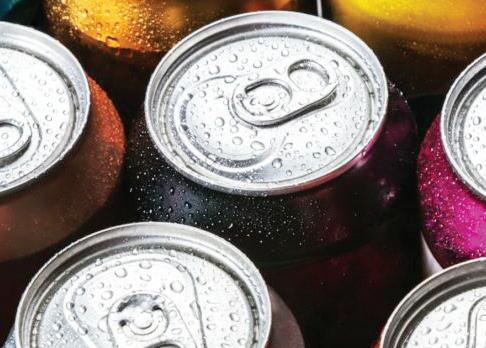
Health tip:
Peaches have a stress-reliever that helps reduce anxiety
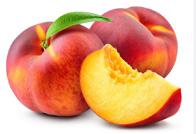
Aspartame, one of the most commonly used artificial sweeteners in foods and beverages, is soon likely to be declared as a cancer-causing agent by the World Health Organization’s (WHO) cancer research arm, according to a media report.
The International Agency for Research on Cancer (IARC) is expected to list aspartame, used in products from CocaCola diet sodas to Mars’ Extra chewing gum, in July as “possibly carcinogenic to humans”, as per a media report.
The ruling, reportedly finalised earlier this month, is based on all the published evidence against aspartame and also includes recommendations from the WHO’s expert committee on food additives, known as JECFA (Joint WHO and Food and Agriculture Organization’s Expert Committee on Food Additives), as well as from national regulators.
The IARC said it had assessed 1,300 studies in its June review. The findings are kept confidential until July, an IARC spokesperson was quoted as saying. However, the findings are “the first fundamental step to understand carcinogenicity”, the spokesperson added.
While IARC has been criticised for sparking needless alarm over hard to avoid substances or situations previously, its 2015 ruling about glyphosate being “probably
carcinogenic” led to lawsuits, and pressured manufacturers to recreate recipes and swap to alternatives.
“IARC is not a food safety body and its review of aspartame is not scientifically comprehensive and is based heavily on widely discredited research,” Frances Hunt-Wood, Secretary General of International Sweeteners Association (ISA), was quoted as saying.
Major food and beverage makers have for decades defended their use of aspartame. But a 2022 observational study from France including 100,000 adults showed that people who consumed larger amounts of artificial sweeteners -- including aspartame -- had a slightly higher cancer risk.
According to sources close to IARC, listing aspartame as a possible carcinogen is intended to motivate more research, the report said.
On the other hand, it will also likely ignite debate once again over the role of IARC, and also the safety of artificial sweeteners. Last month, the WHO had published guidelines advising consumers not to use non-sugar sweeteners for weight control. According to Indian health experts, use of non-sugar sweeteners in moderation may not cause harm in people with diabetes.
(IANS)
Every parent knows that taking children to a dentist often involves a lot of will power and coaxing. And at times, you might even be compelled to drop the plans. Dr Ved, principal dentist, and the founder of Healthy Smiles Dental Group have provided us few tips to ease out this hurdle in parenting.
Most of the fear in children arises out of seeing the needle. How wonderful it would be if we remove it at once! Healthy Smiles offers to inject local anaesthesia through a needle-free device known as injex. It sprays the medicine onto the target area to be absorbed by the tissues. The uptake time may vary from child to child but is generally fast. Injex is definitely a better option than injections as it doesn’t cause pain.
It is all about conditioning. Children grasp things fast and get used to habits faster than you may think. It is advised to start visiting the dentist, for your child, as early as they reach 6 months of age. Dentists can keep a track of the growth of teeth and prevent tooth decay right from the beginning. Doing so is important for healthy teeth as well as instilling good oral hygiene habits into kids. Visiting the dentist from the beginning makes it a norm and is easily acceptable by children.
Most adults do not like to visit dentists either and speak badly about their dental care experiences. But remember, you can only make a change if you stay positive. Do not use words like “painful”, “hurting”, “boring”, etc. Use words such as “wonderful”, “important”, and “healthy”. They might have heard someone else speak negatively
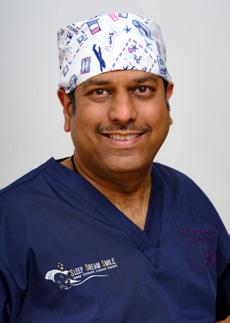

about a dentist visit. Help them forget that and choose a paediatric dentist who treats them thoughtfully.
People are often seen bribing their children for doing things, especially visiting the dentist. Bribery doesn’t only make the task seem difficult for children but can also create serious behavioural issues as grownups. It is better to explain to them the need for dental hygiene and visiting a dentist, rather than offering them toys and sweets in return.
Take Help from Animated Friends
As you know, being a child has its own perks. Watching lots and lots of cartoons or reading story books filled with images are a couple of them. Your child must have one or two favourite cartoon shows or characters. Take examples from these stories and relate it to help your child understand how they, like their favourite characters, must go to the dentist.
Choose the Right Dentist
In the end, it all comes down to a single factor. Selecting a dentist who can understand the mindsets of children is very important. This ensures a better experience for everyone. The right dentist can help a child forget past bad experiences. Healthy Smiles Dental Group has enthusiastic and cordial dentists who specialise
Dr Ved Berani BDS(Mum), ADEC(Aust), MBA(Melb), FIADFE, MFGDP(UK)
Time-restricted eating, also known as intermittent fasting, produced similar weight loss results to traditional calorie counting in adults with obesity, according to a small study. Obesity is a major health issue, affecting millions globally. Many traditional weight loss diets involve counting calories, which can be cumbersome and difficult to do well.
Time-restricted eating, without calorie counting, has become a popular weight loss strategy because it is simple to do. However, whether it’s effective in producing weight loss, especially beyond the short term, is unclear. Researchers from the University of Illinois, Chicago, studied 90 adults with obesity to determine whether intermittent fasting or calorie restricted eating would be more effective for weight control and cardiometabolic risk reduction.
The small randomised controlled trial, published in Annals of Internal Medicine, found that participants who engaged in 8-hour time restricted eating had improved insulin sensitivity compared to those in the control group who ate
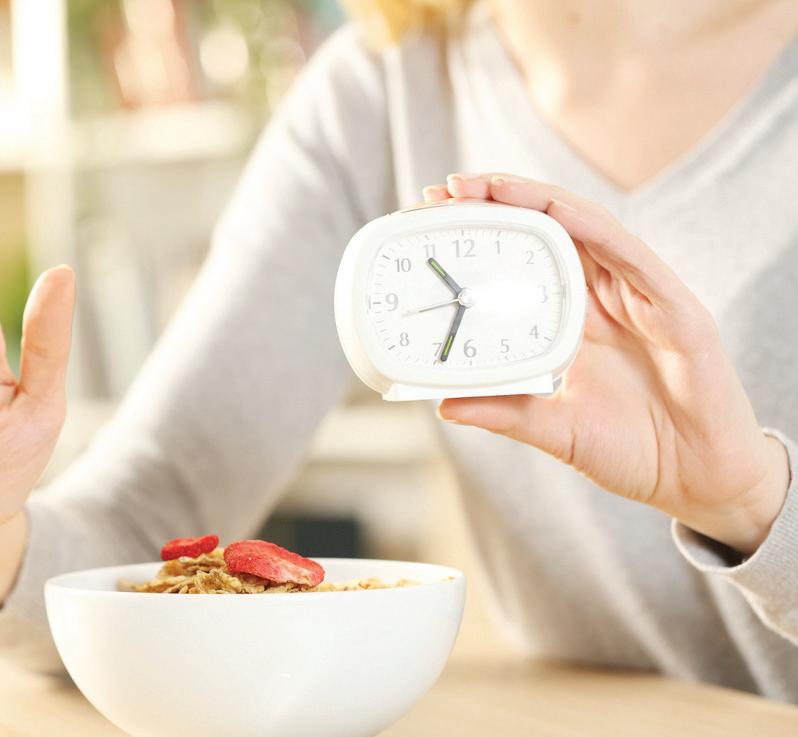
their calories any time over 10 or more hours a day. Participants were randomly assigned to 1 of 3 groups: 8-hour time-restricted eating (eating from noon to 8 p.m. only, without calorie counting); calorie restriction (reduce 25 per cent of their calories daily), or no change in calorie consumption, with eating taking place over 10 hours or more throughout the day.
Both the time-restricted eating and calorie restriction groups met a dietician regularly.
The researchers found that participants who engaged in time-restricted eating ate 425 fewer calories per day than the control group and lost about 10 more pounds than the control group after one year.
The calorie-restricted group ate 405 fewer calories per day and lost about 12 more pounds after one year. Participants showed high adherence to both interventions. Access to dieticians likely helped participants in the restricted eating group make healthier food choices, said authors of an accompanying editorial from University of Colorado School of Medicine. They believe the results of this study can help guide clinical decision-making partially by taking individual preferences into consideration, rather than just choosing a diet that may be more effective. They also emphasised that the results of this study highlight the substantial individual variability in weight loss using these interventions, and that further research is needed to determine who would most benefit from each of these interventions.
A study has revealed that exercise gives positive effects on blood sugar levels in people with Type 2 diabetes. The study was published in the journal, ‘American Journal of Medicine Open’. The study provides a comprehensive but straightforward summary of the benefits of extremise on controlling blood glucose levels in people with Type 2 diabetes.

“The challenge with this is that most, if not all, people know exercise is good for them but they don’t know the best approach,” said Steven Malin, an associate professor in the Department of Kinesiology and Health at the Rutgers School of Arts and Sciences and an author of the study. “We targeted this issue by focusing on a few key parameters: the utility of aerobics versus weightlifting, the time of day that is optimal for exercise, whether to exercise before or after meals and whether we have to lose weight to get benefits or not.”
As part of the analysis, researchers sifted through dozens of studies and extracted common conclusions. Some of the key findings include:
4Habitual aerobic exercise: Physical activity, such as cycling, swimming and walking, that increases the heart rate and the body’s use of oxygen helps manage blood glucose.
4Resistance exercise: Working muscles using an opposing force such as dumbbells, resistance bands or a person’s own body
weight benefits insulin sensitivity in those with Type 2 diabetes.
4Movement throughout the day by breaking up sitting time benefits blood glucose control and insulin levels.
4Performing exercise later in the day can result in better control of blood sugar levels as well as improve insulin sensitivity.
“In short, any movement is good and more is generally better,” Malin said. “The combination of aerobic exercise and weightlifting is likely better than either alone. Exercise in the afternoon might work better than exercise in the morning for glucose control, and exercise after a meal may help slightly more than before a meal. And, you don’t have to lose weight to see the benefits of exercise. That is because
exercise can lower body fat and increase muscle mass.”
More than 37 million Americans have diabetes, and between 90 and 95 percent have Type 2 diabetes, according to the U.S. Centers for Disease Control and Prevention. People with Type 2 diabetes are insulin resistant, meaning that their cells don’t respond normally to insulin, a hormone that controls the level of sugar, or glucose, in the blood. High blood sugar is damaging to the body and can cause serious health issues. While insulin resistance is harmful, scientists believe increased insulin sensitivity is beneficial. High insulin sensitivity allows the cells of the body to use blood glucose more effectively, reducing blood sugar.
Malin researches insulin sensitivity and teaches kinesiology, the study of human movement. He and several other faculty members at Rutgers support the concept of “exercise as medicine.” The idea, which is supported by the American College of Sports Medicine and is increasingly being borne out by research, is that exercise can be considered a first-line therapy. “I’m one of those individuals who subscribe to that notion, and in that way, I think of exercise as a drug,” Malin said.
“Together, this idea of exercise timing and type is important because it helps medical professionals more accurately recommend exercise prescriptions to combat high blood glucose,” Malin concluded. (ANI)
People aged 65 years and above who live in warmer regions are more likely to have serious vision impairment than their peers living in cooler regions, warned a study on 1.7 million old people living in different American counties.
Compared to those who lived in areas with average temperature of less than 10 degrees Celsius, the odds of severe vision impairment were 14 per cent higher for those who lived in areas with average temperature from 10-12 degrees Celsius, 24 per cent higher for those between 12 and 15.55 degrees Celsius and 44 per cent higher for those in counties with average temperature at 15.5 degrees Celsius or above.
“This link between vision impairment and average county temperature is very worrying if future research determines that the association is causal,” said first author Professor Esme Fuller-Thomson, from University of Toronto.
“With climate change, we are expecting a rise in global temperatures. It will be important to monitor if the prevalence of vision impairment among older adults increases in the future,” she added.
Further, the study, published in the journal Ophthalmic Epidemiology, found that the relationship between average temperature and severe vision impairment was strong
regardless of age, sex, income, and education of participants. The association between higher county temperature and serious vision impairment was stronger for individuals aged 65 to 79 compared to those 80 or older, males compared to females. The observed link between average temperature and severe vision impairment may be strong, but the mechanism behind this relationship remains a mystery.
“We know that vision problems are a major cause of disabilities and functional limitations,” said another co-author ZhiDi Deng, a pharmacy graduate from the University of Toronto.
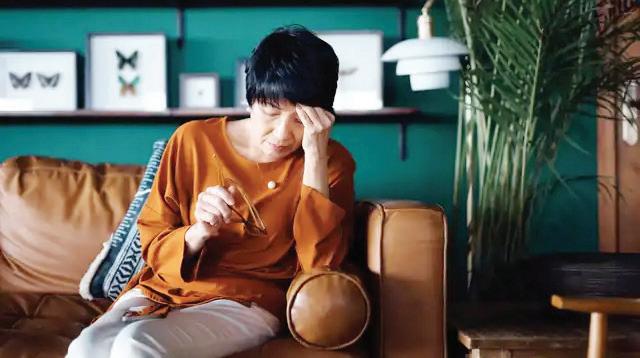
“Serious vision impairment, for example, can increase the risk of falls, fractures, and negatively impact older adults’ quality of life. Taking care of vision impairments and their consequences also cost the US economy tens of billions each year. So, this link between temperature and vision impairment was quite concerning,” Deng said.
The team analysed 1.7 million communitydwelling and institutionalised older adults and compared their vision health with average temperature data obtained from the National Oceanic and Atmospheric Administration.

An analysis by the researchers on the positive effects of exercise on blood sugar levels in people with Type 2 diabetes showed that while every exercise helps -- the timing and type of workout are critical for optimal effects.
According to the study published in The American Journal of Medicine, people know exercise is good for them, but they don’t know the best approach.
“We targeted this issue by focusing on a few key parameters: the utility of aerobics versus weightlifting, the time of day that is optimal for exercise, whether to exercise before or after meals and whether we have to lose weight to get benefits or not,” said Steven Malin, an associate professor at the Rutgers School of Arts and Sciences and an author of the study.
For the analysis, researchers sifted through dozens of studies to identify common conclusions.
Some of the key findings include
-- physical activity, such as cycling, swimming and walking, that increases the heart rate and the body’s use of oxygen helps manage blood glucose.
Researchers discovered that working muscles with an opposing force such as dumbbells, resistance bands, or a person’s own body weight improves insulin sensitivity in those with Type 2 diabetes and that moving throughout the day by breaking up sitting time improves blood glucose control and insulin levels.
Performing exercise later in the day can result in better control of blood sugar levels as well as improve insulin sensitivity, the study showed.
“The combination of aerobic exercise and weightlifting is likely better than either alone. Exercise in the afternoon might work better than exercise in the morning for glucose control, and exercise after a meal may help slightly more than before a meal,” Malin said.
According to Malin, exercise can be considered a first-line therapy.
“I’m one of those individuals who subscribe to that notion, and in that way, I think of exercise as a drug,” Malin said.
“Together, this idea of exercise timing and type is important because it helps medical professionals more accurately recommend exercise prescriptions to combat high blood glucose,” he added.

To get the representation right, the makers of Nawazuddin Siddqui-starrer ‘Haddi’ have brought on board 300 real transgender people in the film. Debut producer duo Sanjay Saha and Raadhika Nanda are helming the film. The former calls the process of finding 300 transgender people for the film ‘adventurous’.
He said: “The process was very adventurous and hard at the same time. It was not very difficult to convince them as we were also learning their life experiences and making them a part of the film. We had a great time learning tons of things from them, including how their life and world is very different from us.” There was one transgender woman named Renuka who helped the filmmakers during the research of the film.
Sanjay said: “She helped us learn about their community and their upbringing, along with the challenges faced by them from childhood to their day-to-day life. She also made us visit many people from the community
which helped us write the script and get a better understanding of their life. She had brought some of her friends from the community to Nawaz so that he could get into the character and deeply understand their life.”
“I’m glad how Nawaz has spent a lot of time with them and making sure he truly understands what they go through.” The team shot with the transgender people in Delhi. Sanjay credits Renuka for helping them make Haddi more authentic when it comes to transgender representation.
“Renuka has helped us through the entire medical process too, including how the operation happens and what they have to go through post operation. The writers sat with the transgender people to have a fair understanding of where they live, where they get treated, what they do in daily lives, and followed their lifestyle which helped us a lot to make Haddi a truth-based film on them since Nawaz is playing a transgender,” he said. (IANS)
Bollywood superstar Akshay Kumar and Parineeti Chopra starrer ‘The Great Indian Rescue’ has blocked its release date. The movie will bow in theatres on October 5, 2023.
The film is based on a true life event of late Jaswant Singh Gill who led India’s first coal mine rescue mission.
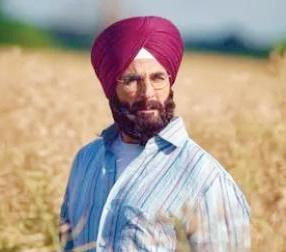
Gill was born in Sathiala, Amritsar, on November 22, 1939. He studied at Khalsa College, and was posted in Raniganj in 1989 when he engineered a special rescue capsule to save the lives of several miners
trapped inside a flooded coal mine.
He received several awards for his brave feat and was the recipient of the “Sarvottam Jeevan Raksha Padak” by President Ramaswamy Venkataraman in 1991.
‘The Great Indian Rescue’, which was earlier titled ‘Capsule Gill’, produced by Vashu Bhagnani, Deepshikha Deshmukh, Jackky Bhagnani and Ajay Kapoor, and is directed by Tinu Suresh Desai. (AGENCIES)

Actress-director Konkona Sen Sharma, who has been receiving a lot of positive response to her short film in the streaming anthology ‘Lust Stories 2’, shared that she struggled in the early part of her acting career to look a certain way and “to fit in.”
Konkona’s short film, which stars Tillotama Shome and Amruta Subhash as the lead characters, explores female gaze and voyeurism.
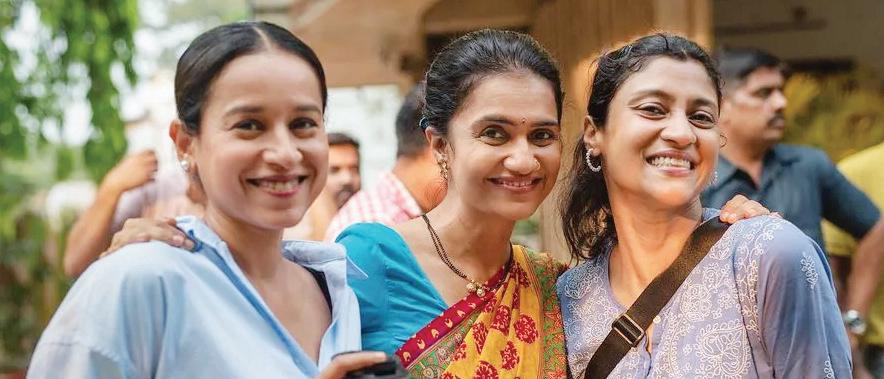
Sharing her thoughts on the existing stereotypes around women and their need for sexual and romantic pleasure, Konkona Sen Sharma said: “Very often, the bodies that are allowed to feel the sexual/romantic pleasure are very limited because usually they have to be thin, fair, rich and youngthat was the fourth factor. So usually only those kinds of bodies are allowed to desire and also there have been certain limitations in terms of how people from different economic backgrounds are portrayed.”
She told Film Companion: “I’ve been acting for twenty years, and I’ve struggled in the early part of my career to look a certain way or to fit in. It’s great in a way because it has helped me not seek external validation. I feel we have a very
narrow focus on what’s desirable and it’s nice to be able to talk about this.”
‘Lust Stories 2’ is streaming on Netflix. (IANS)

Actress Mrunal Thakur, who is receiving a lot of appreciation for her performance in the streaming anthology ‘Lust Stories 2’, feels that mature conversations about sex and lust are of prime importance in current times.
‘Lust Stories 2’ delves into the significance of lust and sex in nurturing successful relationships, with Mrunal’s on-screen dynamic with Neena Gupta’s character as the grandmother highlighting the compelling narrative of the film directed by R. Balki.
The actress shared: “I strongly believe that having mature conversations about sex and lust is key, especially when one is growing up. When one is a young adult, they have a role model who instils the right knowledge and information to a young person.”
She further mentioned: “If all young and impressionable minds, including kids within families, have at least one person they can have honest discussions with about these topics, they will be less likely to seek a plethora of misinformation from
the outside world.”
In ‘Lust Stories 2’, Mrunal Thakur portrays a soon-to-be-wedded woman who finds herself humorously confronted by her “Dadi” (grandmother) about her
perceived “lust quotient” with her future partner.
‘Lust Stories 2’ is streaming on Netflix. (IANS)
Actress Neha Dhupia adopted practising yoga before she even went to partake in Miss India. Having been doing this fitness form for over 20 years, she shared that yoga has changed her life.
Even during her pregnancy, the actress practised pre-natal yoga ahead of becoming a mother, which she says helped her extensively. She said, “I firmly believe that Yoga makes me patient and brings normalcy to a life that can get crazy at times.”
Neha added: “I have been doing this for years now and it even helped when I practised pre natal yoga during my pregnancy. It’s taught me to honour my practice, my teacher and myself with this”. On the acting front, Neha was last seen in ‘A Thursday’ starring Yami Gautam.
The film released in 2022 and was directed by Behzad Khambata. She was seen essaying the role of ACP Catherine “Cathy” Alvarez in the vigilante thriller film.
(IANS)

Pakistani actress Mahnoor Baloch is currently facing criticism after commenting on Bollywood superstar Shah Rukh Khan’s acting skills and saying that he is not handsome. Mahnoor was on a Pakistani chat show titled ‘Had Kardi’, was talking about beauty standards and then said: “Shahrukh Khan has a very good personality, but if you see him according to the beauty parameters and what is considered handsome, he doesn’t come under that.”


The chat show host also spoke about how Mahnoor feels SRK does not know how to act. “It is my opinion about Shah Rukh Khan that he doesn’t know how to act. I think he is a great businessman. He knows how to market himself.
This is my opinion.” Soon after the videos of the interview started doing the rounds, which did not go down well by Shah Rukh’s fans.
One wrote: “Yes, Shahrukh has marketed himself well in your country too, to make your girls beeline for just his glimpses; ask the ladies in your house, they can reply to you better.”
A fan called her “plastic”. “Plastic ka dabba Mahnoor SRK pe comment Karegi lol.”
“Entire world knows SRK. I am sorry but Who are you?” read a comment by the fan.
Priyanka Chopra’s mother Dr Madhu Chopra has shared that she took a break from her medical practice in order to be with Priyanka, after her daughter won the Miss India beauty pageant, and had to go to Mumbai to prepare for the Miss World pageant which proved to be life changing decision.
She said: “The biggest change that happened was when Priyanka won the pageant. She became Miss India and she had to go for the Miss World competition. Our family was not too happy about it as she was very good in her studies and they didn’t want me disturbing her - she was to give her 12th board, that’s a very critical time.”
Speaking on ‘The Habit Coach With Ashdin Doctor by IVM Podcasts’, she further mentioned: “But she had just returned from Boston and her education in America for high school is very different from our school education in India, so she needed to take a gap year to catch up with the Indian students who were far ahead. And she wanted to take Science. So, we decided to give her a gap year and in that gap year this opportunity happened.”
Talking about Priyanka’s preparations for Miss World, she said: “She (Priyanka) became Miss India and she had moved to Bombay to prepare for the Miss World pageant. And that’s when my family put down a condition, that she will only go if one of her parents is with her all the time. So, we sat down and had a discussion as we had a very big practice at that time.”
She continued: “My husband said ‘don’t worry I’ll take care of your practice we will hire someone. And for a daughter it is much better to have her mum around, where I would know half the things and what to do’.”
Madhu revealed that he was a very conservative father, a typical Punjabi father, in a caring and protective manner. “So, it was decided that I would go. So, I just dropped my practice overnight and went with her to Bombay. That was a life changing decision for me,” she added. (IANS)
Actress Rasika Dugal, who is gearing up for her upcoming horror series ‘Adhura’, has shared that she used to get spooked out every time she headed back to her room after the shoot, given the eerie atmosphere on the sets of the show.

The series also stars Ishwak Singh, Shrenik Arora and Poojan Chabra and presents story of a reunion gone wrong.
Haring her experience, the actress said: “The eerie atmosphere on set was unlike anything I’ve experienced before which spooked me every time I got back to the room after shooting. The suspenseful storyline and the immersive production design had a profound effect on me. As an actor, I pride myself on immersing myself into my characters, but Adhura took it to
another level.”
She further mentioned: “There were moments when the line between fiction and reality blurred, leaving me with a lingering sense of unease even when the cameras stopped rolling. It’s a testament to the exceptional storytelling and the dedication of the entire team. I can’t wait for audiences to feel the same spine-tingling thrill when they watch Adhura.”
Produced by Emmay Entertainment and directed by Ananya Banerjee and Gauravv K. Chawla, the series also features Rijul Ray, Zoa Morani, Sahil Salathia, Aru Krishansh Verma as high school friends alongside Rasika Dugal, Shrenik Arora and Rahul Dev playing pivotal roles.
The trailer of the film ‘Neeyat’ which stars Vidya Balan in the lead, paints a riveting picture of a whodunit mystery.
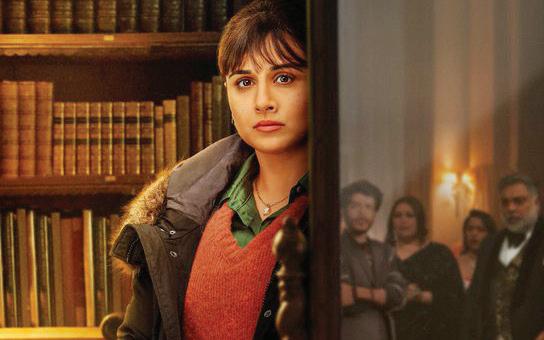
It begins with Ram Kapoor’s character of billionaire, Ashish Kapoor, organising a gathering at his castle in Scotland. As the celebrations go on in full swing, Ashish jumps off from the cliff leaving everyone flabbergasted. Enters Vidya Balan, a detective, Mira Rao who breaks the news to Kapoor’s guests that this one is not a suicide but a murder.
The movie also stars Rahul Bose, Neeraj Kabi, Amrita Puri, Shahana Goswami, Niki Walia, Dipannita Sharma, Shashank Arora, Prajakta Koli, Danesh Razvi, Ishika Mehra and Madhav Deval in pivotal roles.
The trailer reminds of the Daniel Craigstarrer ‘Knives Out’ with a dysfunctional family and their web of secrets acting as the central themes.
Speaking about her experience of working in ‘Neeyat’ and returning to the big screen, Vidya Balan said, “What I enjoy most about being an actor is the opportunity to live the life of a different person with every character I play. In Neeyat, Detective Mira Rao is not your everyday, classic detective which is what made it great fun for me”.
The film has been directed by Anu Menon, who earlier directed Vidya in ‘Shakuntala Devi’.
“Not only did I get a chance to sink my teeth into an unusual and quirky character, but I also got to work with a powerful set of co-actors. This film is my second outing with Anu after ‘Shakuntala Devi’. I have had the most amazing time working with them to make this film. Last but not the least, I’m supremely delighted to be back in theatres with the release of Neeyat and am waiting with bated breath for audience reactions,” the actress added.
‘Neeyat’ marks Vidya Balan’s return to theatres after her successful digital stint with the family entertainer ‘Shakuntala Devi’ to the critically hailed ‘Sherni’ and ‘Jalsa’.
The film has been written by Anu Menon, Priya Venkataraman, Advaita Kala and Girvani Dhyani with dialogues by Kausar Munir. It is produced by the Vikram Malhotra-led Abundantia Entertainment (that also produced Shakuntala Devi, Sherni and Jalsa), and coproduced by Prime Video.
Eat two bananas before a strenuous workout to pack an energy punch and sustain your blood sugar level

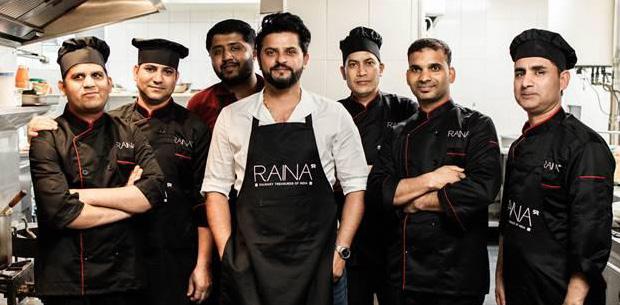
across India's diverse culinary landscape.
Commenting on his latest venture, the cricketer shared his enthusiasm, stating, "I am delighted to bring the flavours of India to Amsterdam. Food has always been an integral part of my life, and I wanted to create a dining experience that captures the essence of Indian cuisine. I hope Raina’s becomes a place where people can enjoy not just the food, but also the culture and traditions that surround it."
Beyond the cricket ground, Suresh Raina broadens his horizons and starts a brandnew project in the centre of Amsterdam. Raina's restaurant, "Rainas," gives residents and visitors alike a unique eating experience, and pledges to introduce the varied and rich cuisines of India to the Netherlands.
Suresh has always harboured the dream of opening a genuine Indian restaurant because of his love of food and his strong appreciation for India's rich culinary heritage.
The opening of "Rainas" not only exemplifies his dedication to the culinary arts but also represents the result of years of preparation, thought, and emotion.
Rainas boasts a meticulously curated menu, featuring a wide array of traditional Indian dishes prepared with the finest ingredients and a masterful touch. From the flavorful curries of the north to the aromatic biryanis of the south, the restaurant promises to transport diners on a delightful journey
Raina's unwavering dedication to his dream is reflected in every aspect of the restaurant. From the thorough menu selection to the thoughtful interior design, Raina has been deeply involved in shaping the restaurant's vision, ensuring it captures the true essence of Indian cuisine and culture.
Rainas opened its doors on 20th June 2023, inviting guests to embark on a remarkable journey through the diverse flavours of India. Raina hopes that the restaurant will become a hub for food enthusiasts, a place where individuals can savour the traditional tastes of India while creating cherished memories.
(IANSlife)

country offer biryani through Swiggy, more than 28,000 thousand restaurants specialise solely in dishing out the biryani.
When it comes to cities that truly appreciated the biryani experience, Bengaluru took the lead with nearly 24,000 biryani-serving restaurants, followed by Mumbai with over 22,000 and Delhi with over 20,000.
Hyderabad topped in biryani consumption, with 7.2 million orders placed through June of this year. Bengaluru came second with nearly 5 million orders, and Chennai came third with nearly 3 million orders, the company mentioned.
International Biryani Day, celebrated on July 2 every year, online food delivery platform Swiggy revealed that Indians placed 7.6 crore biryani orders in the past 12 months.
According to the company, people across the country placed 219 orders per minute for their favourite dish, ranging from the aromatic 'Lucknowi Biryani' to the spicy 'Hyderabadi
Dum Biryani', and from the flavourful 'Kolkata Biryani' to the fragrant 'Malabar Biryani'.
Swiggy's order analysis also revealed some interesting biryani ordering trends from the first half of 2023.
In the last five and a half months, there has been a growth of 8.26 per cent in biryani orders compared to the same period in 2022.
While over 2.6 lakh restaurants across the
A biryani lover from Chennai spent an amount of Rs 31,532 on a single order.
With nearly 85 variants and over 6.2 million orders, 'Dum Biryani 'has emerged as the undisputed champion.
Biryani rice came in second with 3.5 million orders, while 'Hyderabadi Biryani' received over 2.8 million orders.
(IANS)
Smiling that he has a soul connection with food and lives for it, ‘energy chef’ Harpal Singh Sokhi who is often seen on television, not just giving recipes but entertaining his viewers with a peculiar brand of humour and one-liners, asserts, “Precisely why my audience base is between those aged two
and 90. See, I am already preparing the next generation in order to stay relevant for decades to come,” he tells.
The chef, whose latest book ‘The Biryani Leader’ was launched recently, says it is a result of his thought process over the

past decade. Someone who has worked with major five-stars in the country besides launching multiple restaurants, including Karigari, BB Jaan, Dhadoom, Chika Chika, and Twist of Tadka in his three-decade career, he says that while chefs are taught that food is all about art and science, there is another element at play too. “Why do we forget management -- both at the macro and micro level? You keep a vessel on fire and you add spices and all, not realising the oil is so hot that everything will burn. Minute things warrant attention and should become standard practice.
I maintain the Japanese principle of 5S pillars of Japanese management -- Sort (Seiri), Set in Order (Seiton), Shine (Seiso), Standardise (Seiketsu), and Sustain (Shitsuke) are at play even in the kitchen,” says this IHM Bhubaneswar pass-out.
Adding that he sees biryani as a wholesome dish, Sokhi remembers approaching publishers with the idea of writing a book on food and management, but always being requested to work on a cookbook. “But why would I do that? There are enough floating around. Moreover, the effort was to bring forth something path-breaking and not walk the road mostly taken.” Priding himself on wearing “unique chef coats and twin-coloured turbans,” he feels the book is bound to do well.
“Also, biryani is the dish that sells the most in the country. There are more than 50 ingredients but each one has its own taste.” While he feels that social media has made things interesting for food aficionados, the chef says it wise not to follow everything floating blindly. “There may be 10 different recipes for a dish. Just see what is common in all of them and evaluate.
Also, I strongly believe that it is important to search for knowledge that is being given by locals,” says Sokhi, who would be opening more restaurants and lounge bars across the country this year. Believing that it is his state of mind that ultimately decides if the dish will come out well, Sokhi says whenever he is disturbed, he makes it a point not to go near the fire. “I would tell my assistants to take over and go for a walk. Unless I am at peace with myself, the product will not come out well,” concludes the chef whose comfort food is a bowl of biryani cooked by his wife.
By Sukant Deepak
Snacking has many benefits, including keeping your appetite in check for meal times and providing your body with nutrients for the day. It’s important to keep nourishing snacks prepared so that you can maximise the benefits and enjoy it at the same time. The only times we want to cut down on snacking are if it consists mainly of processed foods or if you have it in addition to what your body
Eat mindfully
Before you eat, ask yourself – Am I hungry? Or am I eating purely out of habit?



If you answer is habit, this is something which may take a little practice of trying to reduce over time.
What snacks should I limit?
We never suggest completely avoiding any food, however there are foods which would be considered a ‘sometimes food’ for consumption in small amounts only occasionally. Normally these snack options are a ‘quick fix’ and offer the body very limited nutrients other than sugar, fat or salt. The more we have these foods, the more our body will start craving for them.
Examples include:
• Biscuits (sweet or savoury)
• Cakes and pastries
• Chocolates
• Lollies
• Chips
• Fried foods (samosa, pakora etc)
• Salty namkeen foods
• Soft drinks
• Juices
• Ice cream
• High-sugar desserts
I am hungry, what can I eat? And how much?
The first most important suggestion would be to look for foods that are high in fibre. Fibre helps keep our appetite content and keeps the bowels moving. At times we feel hungry because we
may be missing out on certain nutrients for example protein, especially vegetarians.
Some daily examples of these foods include:
• Fruits (2 fresh, frozen or dry fruits 3 tablespoons approx.)
• Popcorn 1 cup (unsalted and made with canola oil)
• 1 small bowl cucumber and tomato chaat (can also add ½ cup of bhel, poha or moong to your salads)
• Hummus and vegetable sticks*
• Handful of roasted gram or chickpeas*
• Nuts (1 handful of unsalted nuts or seeds)*
• 1 tablespoon peanut butter and 1-2 rice thins*
• 2 slices of cheese*
• 1 cup of milk*
• ¾ cup of yoghurt*
• 1 egg*
*Indicates foods containing protein also. Keep up your regular routines
It is important to make sure you are eating your meals spread out throughout the day and don’t miss meals. Don’t forget to drink water!
Plan your shopping

Planning what snacks, you bring home in advance will help make snack time a lot easier.
Please note this advice is of a general nature. If you have any concerns or queries you should get tailored advice from an Accredited Practicing Dietitian and always consult with your General Practitioner before making and changes.
For a really quick meal try this chicken dish cooked with vegies in a mild sauce.
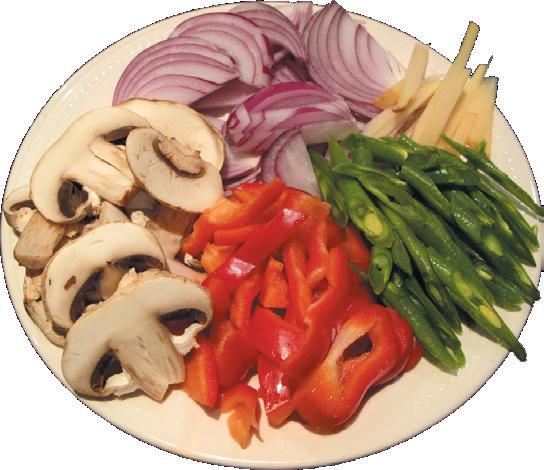
Making chicken doesn’t has to be always an elaborate process.
I have used skinless chicken breast fillet with a mixture of Indian spices and cooked it like Chinese style stir fry! It’s different, tasty, easy, quick and makes a wonderful dish.


A must try chicken with vegies
500 gm chicken fillet cubed or sliced
handful of beans sliced
1 med red onion sliced
1 red capsicum sliced
1/2 cup sliced mushrooms
1 tbs ginger sliced
1 tsp ground coriander
1 tsp ground chilli
1 tsp ginger/garlic paste each
little grated rind of lime (opt)
salt to taste
olive oil to cook
1 cup stock
SAUCE
2-3 tbsp sweet chilli sauce
1 tsp ground all spice
1 tbsp lime juice
pinch nutmeg
1 tsp arrowroot or cornflour

Salt to taste
Olive oil to cook
Marinate chicken with ginger,garlic. coriander,chilli and lime rind for about 30 mins.
Heat oil in wok or pan. Add sliced ginger, onion and capsicum and stir fry about 2-3 mins. Set aside.
In the same wok heat a little oil and stir fry the chicken pieces till tender.
Whisk all the ingredients for the sauce in a bowl
Serves 2
and pour over the chicken and mix well. Add the veges to the chicken and toss well. Pour cornflour mixed with 2 tbsp water and cook until thickens.
GARNISH: chopped spring onion or coriander leaves
SERVE: Hot with basmati rice or brown rice.

TASTY TIP

This dish taste best served immediately. You may use tender pork or beef and vegetables of your choice.
BY MANJIT SETHIThe picture of your financial prospects, as it emerges from the augury from the stars is far from bright. Writers, poets and others of their ilk would do well to make provisions for the rainy day, for they are likely to face an extremely lean spell during this coming month.. There is also the likelihood of your relations with your superiors, deteriorating to a level that serious losses would become probable
Best days: 3, 12, 30
Lucky Colour: Red, Orange, Cream
Simha (Leo)
A very helpful, month in so far as your financial prospects are concerned. Many of you would reap a rich harvest of sudden gains, that are likely to come your way. Others would gain from speculative activity, making handsome profits. Most of you would be able to derive quick, useful results from your efforts.
Best days: 5,3
Lucky Colour: White & Orange
Dhanu (Sagittarius)
This month there is every chance that good fortune would give your career prospects a slip. Throughout the month you may be burdened by a feeling of insecurity. This would cloud your judgement and you might seek to redress the balance by frequent change of jobs or business operations. A highly undesirable state of affairs. Any change that you make should only be after due and careful deliberation.
Best days: 9, 18
Lucky Colour: Red, Blue



An excellent month for your family affairs during which there would be much promising material in store, since the stars are quite favourably disposed. The chances of celebrating an auspicious occasion to celebrate an addition to the family are very bright during the coming month. A good deal of travel is also indicated.
Best days: 9, 18, 27
Lucky Colour: Green, Blue
Kanya (Virgo)
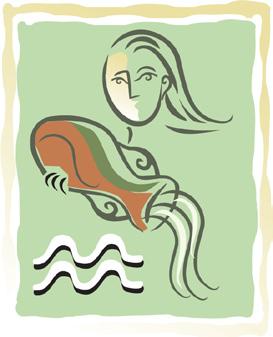
This month your financial prospects look quite good and could well establish you on a permanently sound footing. Many of you can look forward to reaping a rich harvest of sudden gains. Others would gain through speculation, which would also bring in rich profits. Most of you would in any case have a way of handling your juniors or workers in a manner that will enable you to derive optimum benefit from their services.
Best days: 3, 12
By D. Narayan (Tantracharya) M: 0425 660 220
Full of buoyant energy, in a favourable time you would do extremely well for yourself during the coming month. Possessing the courage of your convictions, you would forge ahead in your pursuits and make success look easy to achieve, In this, you would be helped by an extremely fortunate set of circumstances.
Best days: 2, 7, 9
Lucky Colour: Red, White, Yellow


A gainful month, in so far as your financial prospects are concerned. Many of you can look forward to reaping a rich harvest of sudden gains. Speculation would also benefit quite a few among you. There is also a good chance of a favour being done to done to you by some old gentleman which could easily turn out to be a financial boon.

Best days: 9, 18
Not a favourable month, for your financial prospects, in so far as the augury from the stars is concerned. There is a distinct possibility of your relations with your superiors deteriorating to such an extent that you might have to suffer a loss on this account. You must, therefore, guard against such a possibility and take steps well in advance to prevent such an eventuality.
Best days: 9, 18
Lucky Colour: Red, Blue

This month you would have excellent opportunities for career advancement. Hard work will almost be the hallmark of this month. You would be so engrossed in the realization of your objectives that for the completion of your task no effort would be spared. And this will bring considerable success this month.
Best days: 1, 3, 4
Lucky Colour: Orange, Green

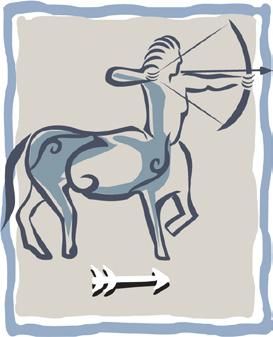

A month during which there is nothing very favourable about your financial prospects, in the augury from the stars. Writers, artists, sculptors, and others of their ilk should make provisions for an extremely lean period, because that is just what they are going to face. Despite association with several gifted people of learning, most of you would be struggling to achieve planned goals, and would even then not achieve much success.
Best days: 1, 3, 4
Lucky Colour: White, Green, Blue
Lucky Colour: Red, Blue
Lucky Colour: Red, Orange Makara
Kumbha
Those dealing with the government would have to face a rough patch as would people having dealings with foreign countries, or interstate dealings. In short, most of you would have to work quite hard and struggle to achieve planned targets, in which task, despite your best efforts, no significant success would be scored.
Best days: 5, 3, 6
Lucky Colour: White, Green

A happy month, Not only will you remain active and energetic throughout the month, those inclined to be proud of their generative powers, would be pleasantly surprised to discover that their faculties are, if anything above, normal. This could make for a fuller enjoyment of life on the physical plane, as well as emotionally and mentally, put you in a happy state.
Best days: 2, 7, 9
Lucky Colour: Red, Yellow, White
My daughter went to a Mexican fast food and ordered a taco. She asked the person behind the counter for 'minimal lettuce.'
He said he was sorry, but they only had iceberg lettuce.
I live in a semi-rural area:


We recently had a new neighbor call the local city council office to request the removal of the DEER CROSSING sign on our road. The reason: 'Too many deer’s are being hit by cars out here! I don't think this is a good place for them to be crossing anymore.'
I was at the airport, checking in at the gate when an airport employee asked, 'Has anyone put anything in your baggage without your knowledge?'
To which I replied, 'If it was without my knowledge, how would I know?'
He smiled knowingly and nodded, 'That's why we ask.'

The pedestrian light on the corner beeps when it's safe to cross the street.
I was crossing with an 'intellectually challenged' co-worker of mine.
She asked if I knew what the beeper was for. I explained that it signals blind people when the light is red. Appalled, she responded, 'what on earth are blind people doing driving?!' She is a government employee....
When my wife and I arrived at a car dealership to pick up our car after a service, we were told the keys had been locked in it.
We went to the service department and found a mechanic working feverishly to unlock the driver’s side door. As I watched from the passenger side, I instinctively tried the door handle and discovered that it was unlocked.
‘Hey,' I announced to the technician, 'it’s open!' His reply, 'I know. I already did that side.'

STAY ALERT!



